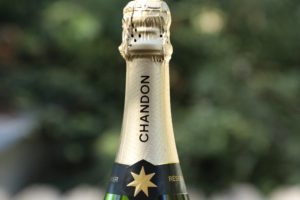
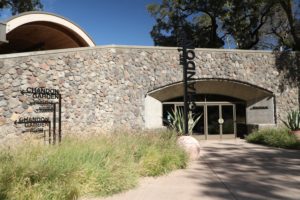
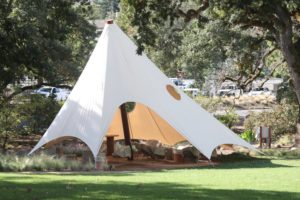 CHANDON California is one of Napa Valley’s iconic and well- visited wineries; they are only one of four Napa Valley based wineries that focus on sparkling wine production, i.e. Champagne style wines (the others being Mumm Napa Valley, Domain Carneros and Schramsberg). CHANDON California owned by Louis Vuitton Moët Hennessy (LVMH); LVMH also owns or has part ownership of several other Napa Valley based wineries including, Colgin Cellars, Joseph Phelps and the property formerly the home of Newton Vineyards, among approximately 25 wineries or spirits producers the company oversees in wine regions around the world. The oldest winery in their portfolio is Domaine des Lambrays in Burgundy which dates back to 1365. This global empire is not only limited to wine; under company ownership are numerous iconic and well-known fashion, perfume, jewelry and other lifestyle products. LVMH was formed in 1987 between Louis Vuitton (founded 1854) and Moët Hennessy (founded 1971 as the result of a merger between Moët & Chandon and Hennessy); the company’s reach is global in scope.
CHANDON California is one of Napa Valley’s iconic and well- visited wineries; they are only one of four Napa Valley based wineries that focus on sparkling wine production, i.e. Champagne style wines (the others being Mumm Napa Valley, Domain Carneros and Schramsberg). CHANDON California owned by Louis Vuitton Moët Hennessy (LVMH); LVMH also owns or has part ownership of several other Napa Valley based wineries including, Colgin Cellars, Joseph Phelps and the property formerly the home of Newton Vineyards, among approximately 25 wineries or spirits producers the company oversees in wine regions around the world. The oldest winery in their portfolio is Domaine des Lambrays in Burgundy which dates back to 1365. This global empire is not only limited to wine; under company ownership are numerous iconic and well-known fashion, perfume, jewelry and other lifestyle products. LVMH was formed in 1987 between Louis Vuitton (founded 1854) and Moët Hennessy (founded 1971 as the result of a merger between Moët & Chandon and Hennessy); the company’s reach is global in scope.
“This willingness to innovate – as long as, and only if, quality can be maintained – is reflected in the character of its Californian daughter, Domaine Chandon”. ~ Patrick Forbes: Rising Star – Domaine Chandon: A Decade of Sparkle
CHANDON California was founded in 1973, initially as M & H Vineyards to honor the parent company Moët-Hennessy. This was the first French owned sparkling wine producer in the U.S. Two men played an early critical role in deciding to move forward with operations in Napa Valley – former President at the time of Moet & Chandon, Bertrand Mure and another executive, Alain Chevalier. The ‘boots on the ground’ person who oversaw the development of CHANDON California in all aspects was founding chairman and president John Wright. John was an international consultant for Arthur D. Little who transferred internally within the company to their San Francisco office. And he oversaw creating a study called Wine America for several clients including Robert Mondavi Winery – a look at the state of the wine industry in the United States at that time and its future. It was this study that was brought to the attention of Moët-Hennessy in the early 1970s.
French based Edmond Maudiére was their consulting winemaker, flying over several times a year for 20+ years. Incidentally, Wright’s first vineyard introduction to Napa Valley was as a limited partner in Lyncrest Vineyards (now the site of Marston Family Vineyard). Later John and his brother owned a vineyard on Mt. Veeder which they called Kittyhawk, much later owned by several Hollywood couples who for a short while produced Longtable wines from this site. It was John’s house and vineyard site that stood in as CHANDON California first address (prior to the winery being built) – located at 1743 Mt. Veeder Road.
The first crush for CHANDON California was in 1973 at Mt. Veeder Winery; the resulting wines from this year were then saved to be used for blending in future vintages. The 1974 harvest was their first commercial harvest creating a cuvée as they were not yet producing vintage-dated wines. This wine was bottled as a California Chardonnay and labeled as “Fred’s Friends” in homage to Frederic Chandon, who eventually became chairman of Moët & Chandon. Early CHANDON California winemaker was Dawnine Dyer who eventually became their vice president and primary winemaker. She worked at CHANDON California from 1976-2000; she continues to consult for a limited number of wineries and together with her husband Bill Dyer, own a small vineyard on Diamond Mountain and produce a limited number of their own wines under the brand Dyer Straits Wine Co.
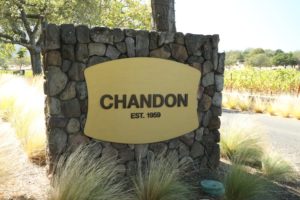 Perhaps somewhat surprising, since there are hillsides at CHANDON California is the property was never developed for wine caves despite a 100 foot cave tunneled into the hill near the winery. We are not sure if it is currently being used for anything.
Perhaps somewhat surprising, since there are hillsides at CHANDON California is the property was never developed for wine caves despite a 100 foot cave tunneled into the hill near the winery. We are not sure if it is currently being used for anything.
In her book, From Bubbles to Boardrooms, then Vice President of Marketing and Communications for CHANDON California Michaela Rodena noted that employees and friends of the winery took 100 cases of this initial wine – so the decision was made to bottle the rest of the tank which resulted in 450 cases. Michaela also mentioned that since their wines were being made at Trefethen Winery at the time which was not yet open to the public and CHANDON California was not yet completed – orders would be fulfilled at a pre-arranged time at the entrance to the construction site. Michaela also owns her own wine brand, Villa Ragazzi, focusing on Sangiovese.
The physical winery was designed by San Francisco based ROMA Design Group. Founded in 1968, remarkably vestiges of this firm are still in business but have since transitioned to ROMA Collaborative; other exciting projects they have been involved in include the Third Street Promenade shopping district in Santa Monica and the Ferry Building area in San Francisco among numerous others.
CHANDON California was the first French-owned sparkling producer in the USA. And in a bit of Napa Valley historical trivia, for a short period from 1973 through harvest 1977 despite not producing sparkling wines, nearby Trefethen Winery was home to thousands of bottles of sparkling wine. The reason for this is that CHANDON California took over the second floor of Trefethen Winery for their own winemaking operations – before the winery buildings at CHANDON California was yet built.
Gino Zepponi joined CHANDON California as their Vice President of Operations in 1977. A trained engineer and the co-founder of ZD Wines in 1969, while at CHANDON California he developed and introduced a custom made gyropalette to automate the riddling of the sparkling wines. Tragically he passed away in 1985 from a car accident.
415 Sansome Street, San Francisco
And according to author Jamie Laughridge in her book, Rising Star – Domaine Chandon: A Decade of Sparkle Groezinger’s Wine Shop in Yountville (now Wine Country Connection) at that time wineries had to sign a contract with a retail outlet before they could legally sell wine. That contract was with Groezingers. And she also mentions that the first ever retail outlet that carried wines from CHANDON California was the old London Wine Bar at 415 Sansome Street in San Francisco (1974-2006) – now home to the Barrel Room.
Over the years a number of winemakers who now have their owner wineries or brands have worked here including Dawnine Dyer and Ernie Weir. In 1999 their long time “riddler” retired (a riddler is one who turns the bottles by hand in order to allow the yeast to slowly work its way out to the stem of the bottle where it can then be removed by a process called ‘disgorging’). After his retirement, CHANDON California decided to begin making limited production still wines in addition to their sparkling wines. Yes, CHANDON California even produces a Napa Valley Cabernet Sauvignon. All the grapes for their still wines are grown in blocks completely separate from the grapes used for their sparkling wines.
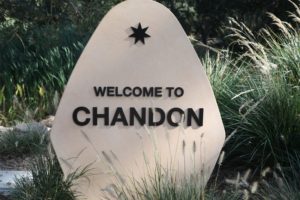

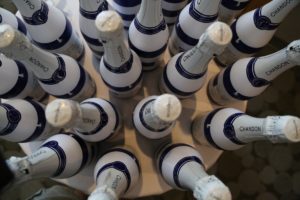 Riddling racks take up a lot of space and like most larger wineries producing sparkling wines, the riddling process is automated. Wineries often come up with creative names for their riddling machines like BOB at Mumm – the staff at CHANDON California simply calls their riddling machines, VLM for “very large machine”. Their former riddling rack storage space is now used for barrel aging the still wines.
Riddling racks take up a lot of space and like most larger wineries producing sparkling wines, the riddling process is automated. Wineries often come up with creative names for their riddling machines like BOB at Mumm – the staff at CHANDON California simply calls their riddling machines, VLM for “very large machine”. Their former riddling rack storage space is now used for barrel aging the still wines.
The winery uses three varieties for their sparkling wines: Chardonnay, Pinot Noir and Pinot Meunier. Domaine Chandon was the first California winery to use Pinot Meunier in their sparkling wines; this variety is a lesser-known cousin of Pinot Noir. Today out of the 1,200+ commercial Napa Valley based wine producers that we have personally visited and tasted with, only a handful of wineries in Napa produce either a still or a sparkling wine from Pinot Meunier. Meunier means “miller” in French – referring to someone who mills flour. For those with a passion for etymology, when you look at the back of a leaf of Pinot Meunier, you will notice numerous fine white hairs – possibly resembling powdered flower to those who originally came up with this name. As a result, vineyards of this varietal are easily identifiable, even from afar – especially early in the growing season by their whitish grey looking leaves.
CHANDON California owns three estate vineyards in the Napa Valley including in Carneros which is the largest in their portfolio at around 850 acres, Mount Veeder, located at an elevation of around 1,600 feet – above the fog line and about 60 acres, and in Yountville, where the winery is located with about 130 acres. In addition, they purchase grapes from a variety of northern and central California coastal sites. All their wines from this particular Chandon are sold either in the United States or in Canada.
After the Atlas Fire of 2017 which burned through some of their vineyard properties, some changes were made in terms of farming. Since 2018, CHANDON California no longer uses herbicides, instead bringing in sheep to seasonally graze and using mechanical implements to mow weeds around the trunks of the vines. Electric tractors are also being used to manage the vines. The amount of other pesticides used have been reduced by encouraging barn owls and dispersing disrupter pheromone sprays to mitigate mealybugs (one of the vectors of leaf roll virus).
Their vineyards are managed by an in-house team, rather than through an outsourced vineyard management company. The viticulture team introduced additional cover crops to increase diversity and have converted to no tillage across all their vineyards. This has resulted in lower temperatures under the vines including along the fruit zone. And this is especially important as temperatures continue to increase during the growing season and also during sustained heat spikes. And in terms of mitigating temperatures, the viticulture team has moved away from de-leafing, providing more canopy and resulting shade for the grapes.
Water conservation is an important part of their efforts including reusing water as much as possible within their vineyards. And collecting and storing rainwater in vineyard reservoirs. And at the winery, during the interior renovation from 2021-2023, exterior landscaping transitioned to native grasses and other drought tolerant species.
Winery property
CHANDON California has been voted Winery of the Year in past years by the California Tourism Association and most recently received a similar award in 2018 at the International Wine & Spirits Competition: Sommelier Challenge. The winery is located just off Highway 29 initially on the same road that leads to the Yountville Veteran’s home slightly west of the town of Yountville (only a several minute drive from the center of Yountville). In prior years driving up Highway 29 from the town of Napa, one may have seen a billboard that prominently displayed a picture of a champagne cork and a regular wine cork with the line above saying, “which is more fun?!”
Guests who visited the winery in years past were also greeted with signs publicizing their own winery radio station; they were the only Napa winery to have their own station; at the time, it was broadcast on FM channel 88.1.
The property features attractive landscaping including rock sculptures held together with re-bar and an intriguing rock “mushroom garden”.
A rather lengthy parking lot is divided into an upper and a lower section. The long driveway enters the lower parking lot; if the first 2 or 3 spaces are free to your right-hand side, take these as they are shaded under the oaks, and one does not have to drive all the way through the long parking lot and around to exit when you leave. Rather if you back into these coveted spots, when you are ready to leave simply pull out; you will already be at the exit. The entrance to the winery is directly next to the lower parking lot – cross the small wooden bridge over the water and make the short walk to the visitor center entrance. A boutique wine shop offers both a wide variety of their sparkling wines, some still wines and other products including CHANDON California olive oil and CHANDON California honey. Their olive oil is made from olives growing on their Yountville property and is processed at night at an olive mill in Mendocino County.
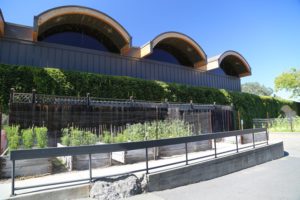
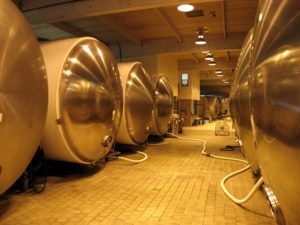
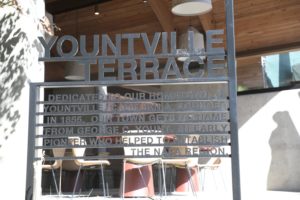 In 2023, celebrating the winery’s 50th anniversary a major interior renovation was completed; outdoor spaces were also updated and expanded supporting additional experiences including adding private tent-like garden cabanas among the oak grove. CHANDON California offers a remarkably wide range of experiences; some of these include: the Chandon Garden for picnicking, the Yountville Terrace for tasting flights, The intimate The Cove, Under the Oaks for customized experiences and Wrights Landing for group tastings. Club Chandon Lounge is located in a space that formerly housed the tasting room and tasting bar. This indoor and outdoor space features comfortable seating in a relaxed and semi-private environment, exclusively for CHANDON California club members.
In 2023, celebrating the winery’s 50th anniversary a major interior renovation was completed; outdoor spaces were also updated and expanded supporting additional experiences including adding private tent-like garden cabanas among the oak grove. CHANDON California offers a remarkably wide range of experiences; some of these include: the Chandon Garden for picnicking, the Yountville Terrace for tasting flights, The intimate The Cove, Under the Oaks for customized experiences and Wrights Landing for group tastings. Club Chandon Lounge is located in a space that formerly housed the tasting room and tasting bar. This indoor and outdoor space features comfortable seating in a relaxed and semi-private environment, exclusively for CHANDON California club members.
Food can be integral part of a visit; the former Etoile restaurant space was also renovated and is now home to the Epicurean Hub. Available by reservation only, the Epicurean Hub offers a five-course farm to table meal paired with various Chandon sparkling and still wines. The constant evolution of tasting experiences and a wide variety of products (including select seasonal bottlings) are an integral part of how CHANDON operates.
Depending on the type of sparkling wine, CHANDON California ages the wines from one to eight years. And while most people visit CHANDON California for their array of sparkling wines, the winery produces still wines including Pinot Noir and a rare bottling of Pinot Meunier; these bottlings are for sale in the boutique shop.
NOTE: For many years CHANDON California offered tours available to the general public by walk-in, but they no longer offer these tours; a tour was our first introduction to CHANDON California many years ago. During one of their tours, we learned that bottles of sparkling wine contain about 56 million bubbles; apparently one of the French Champagne producers conducted extensive research on this.
Special sparkling wine cocktails are also available including some delicious mocktails which are ideal for nondrinkers and for the always important designated driver. The Carneros Cooler is a fun one (if available) – one of the ingredients is honey harvested from their hives at their Carneros property. CHANDON California often holds fun events on a rotating basis. Weekends can be quite popular; CHANDON California can see up to 2,000 people on a busy weekend day.
This Chandon like the other Chandon properties, is inherently endowed with a generous dose of creativity and innovation, both in terms of their diversity of sparkling wines as well as hospitality offerings. Some of our most memorable visits around the planet while chasing spaces or places connected to ownership or heritage of wineries in Napa Valley have been at Chandon wineries.
Select Wines
The wines of CHANDON showcase California sunshine but always from cooler sites. As a result, the wines are balanced, inherently express a vibrant acidity while keeping the fruit characteristics front and center with attributes from the yeast, providing a complementary role.
Sparkling
Signature Collection
The CHANDON California By the Bay, Carneros Vineyard Reserve Blanc de Blancs (a non-vintage wine of 92% Chardonnay and 8% Pinot Blanc) is medium gold in color; the bouquet offers aromas of cut green apple, freshly mowed grass, lemongrass, pear, and kumquat. This wine carries a lot of energy from its zesty character from its bright acidity. It offers flavors of lemon, grapefruit and red apple. It lingers with a citrus quality which is slightly tangy but not tart. 80% of its primary fermentation was conducted in stainless steel while the remaining 20% was fermented in French oak barrels. We immediately thought of pairing this wine with the Bibb lettuce salad served for decades at La Gare Restaurant in Old Railroad Square in Santa Rosa, CA.
The CHANDON California California Brut Rosé is medium salmon in color; the bouquet smells fun and fruity with aromas of freshly muddled strawberries and light notes of scents similar to under ripe watermelon, but more so like snow algae, found on the surface of snow, usually at high elevation. The palate offers flavors of red cherry, strawberry and pomegranate framed by a light creamy texture. This bottling is not overly complex; it is very balanced with a lingering light berry fruit note along with bright acidity. It offers plenty of enjoyment and is easily and quickly consumed. It is bottled with a screw cap covered by a faux looking champagne cork plastic cap.
The CHANDON California California Brut is medium straw in color; the nose offers a diversity of aromas including a flint-like quality, lemon zest, citrus blossom, pear, honey and red apple. Texturally this sparkling wine floats across the palate with flavors of lemon, lime, and green apple. It lingers with firm and bright acidity and a light biscuit nuance; this is a refreshing everyday drinking wine. We immediately thought of pairing it with something very fresh from the sea, i.e., sashimi, and for some reason this wine made us also think of of a place … wandering the tiny streets of Kyoto in Japan in search of culinary excellence.
Free Spirits Collection
The CHANDON Garden Spritz is a cuvée made with Chardonnay, Pinot Noir and Sémillon. We first enjoyed this at Chandon in Mendoza; made by their winemaking team in Argentina, this was their first product marketed internationally. We have seen this sold at several of the Chandon wineries including in Napa Valley and Australia. This wine is deep copper in color; on the bouquet there are aromas of dried orange peel, sarsaparilla, gingerbread, cardamom, clove, Graham cracker, tarragon, anise and cranberry. On the palate there are flavors of orange slice candy, ginger snaps and cranberry accompanied by herbal bitters including lavender. These delicate flavors are complemented by a light but noticeable lingering sweetness. While drinking this delightfully delicious beverage, we imagined ourselves in an ad for this product, comfortably stretched out on a recliner chair next to a pool, fashionably dressed from head to shoulder in yellow and orange, topped with a vintage corduroy octagonal beret, in conversation with well tanned leggy models speaking with exotic accents.
And this wine is so popular that one of the train cars used by the Napa Valley Wine Train is named the CHANDON Garden Spritz.
ROOTS Collection, Reserve
The CHANDON California Brut Reserve is medium gold in the glass; the nose offers aromas of toast, kiwi, lemon juice, lemon zest and citrus blossom. The creaminess on the palate is nicely balanced by its crisp character. It offers flavors of apple, pear, tangerine and lemon and lingers with a wake up and noticeable zippy acidity. After a long day this is just what the doctor ordered to go from tired to feeling refreshed. This wine is 63% Pinot Noir and 37% Chardonnay with grapes sourced from both Napa Valley and Sonoma County. Its primary fermentation took place in stainless steel tanks. It was aged for 36 months on the gross lees before being riddled and disgorged. This wine then aged for 6 more months in bottle before it was released.
The CHANDON California Reserve Meunier, Los Carneros is extra brut at only 5 grams/liter; this is the lowest dosage of any of the Chandon sparkling wines. This rare sparkling bottling of Pinot Meunier is medium gold in color; minerally and flinty, the bouquet offers additional aromas of Gravenstein apple, lemon juice, orange blossom, pear and white toast. Invigorating both on the bouquet and the palate, it offers flavors of Red delicious apple, kiwi, tangerine, gooseberry, honeycomb, dried apricot and a hint of ginger. Its texture is lightly fleshy and creamy. Fresh, focused, balanced and charming – these are all adjectives flowing easily to describe its overall character. Finishes flavorful and bright. We immediately thought of pairing this wine with some sort of seafood, but then also thought it would be nice with a creamy mushroom pasta.
ROOTS Collection, Terroir
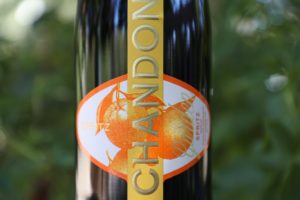
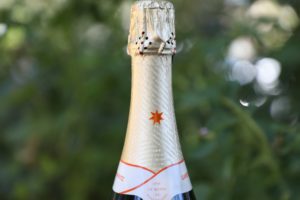
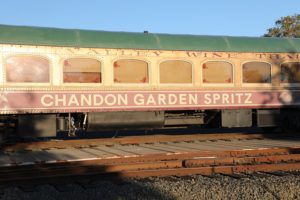 The 2017 CHANDON Terroir Mt. Veeder Blanc de Blanc (100% varietal Chardonnay) is from their vineyard at 1,400, from one block of vines planted in 1982. These are among the older Chardonnay growing in Napa Valley. And this site has a wide diurnal temperature range during the growing season between day and night. The base wines for this bottling are always rich and distinctive. This wine is medium to deep yellow in color; on the bouquet there are aromas of freshly cored Golden delicious apples, dried hay, and bosc pear. On the palate there are flavors of green apple, lemon juice, lime, a hint of young kaffir lime leaf and white grapefruit. This wine is brightly lit, complemented nicely with a supple and rounded mouth feel. The crisp finish continues to linger with a light drying character.
The 2017 CHANDON Terroir Mt. Veeder Blanc de Blanc (100% varietal Chardonnay) is from their vineyard at 1,400, from one block of vines planted in 1982. These are among the older Chardonnay growing in Napa Valley. And this site has a wide diurnal temperature range during the growing season between day and night. The base wines for this bottling are always rich and distinctive. This wine is medium to deep yellow in color; on the bouquet there are aromas of freshly cored Golden delicious apples, dried hay, and bosc pear. On the palate there are flavors of green apple, lemon juice, lime, a hint of young kaffir lime leaf and white grapefruit. This wine is brightly lit, complemented nicely with a supple and rounded mouth feel. The crisp finish continues to linger with a light drying character.
The 2016 CHANDON Terroir Los Carneros is their coolest vineyard and features shallow and clay soils. Wines from this property always express a zesty and bright character. This wine is 76% Pinot Noir, 20% Chardonnay and 4% Pinot Meunier. This wine is medium to deep gold in color; the immediate aromatic hit is of freshly cored Golden delicious apples along with brioche, a yeasty character and almond. On the palate there are flavors of raspberry, red currant, lime, red delicious apple, pomelo, pineapple and toasted almond lingering on the finish. Minerally. This wine features a zesty, lively and refreshing finish which immediately begs another sip.
The 2016 CHANDON Terroir Yountville; this vineyard features deep soils, volcanic rocks and is the northernmost of their vineyards and as a result, the warmest site. The wines from here are expressed as riper, more robust and always feature plenty of personality including some herbal notes that aren’t expressed from grapes from their other properties. This wine is 50% Chardonnay and 50% Pinot Noir. Future vintages will most likely include small amounts of Pinot Meunier, also from their Yountville vineyard. This wine is medium to deep gold in color; the bouquet offers orchard fruit aromatics of apricot, peaches and a note of honeycomb. Richly flavored with a rounded texture, the palate includes notes of nectarine, white peach, mandarin orange, ginger and yellow plums. This wine is both rich yet also features a simultaneous energetic acidity.
ROOTS Collection, Winemaker Explorations
The CHANDON 50th Anniversary Winemaker’s Blend was blended by both the current wine making team with the assistance of previous CHANDON California winemakers. These included Pauline Lhote (2015-present), Tom Tiburzi (2005-2014), Wayne Donaldson (2000-2005) and Dawnine Dyer (1973-1999). This wine is as blend of 69% Chardonnay, 21% Pinot Noir and 10% Pinot Meunier from the 2018 vintage; is was aged sur lees for 3.5 years. And it is made from 67% Napa Valley grown grapes and 33% from Sonoma County including from all three CHANDON vineyards. It is medium gold in color; the invigorating nose offers aromas of golden apples, walnut skin, ginger, honeycomb, pineapple, yellow peach and a subtle note of white toast and matchstick. The palate offers a simultaneous vibrancy of acidity and a richness of flavor. These include notes of honeycomb, ginger, mandarin, green apple and underripe pineapple – complemented by a long mouth-watering finish. Pair with a Dungeness crab salad.
Pinnacle Collection, Étoile
The CHANDON Etoile Brut is a blend of 52% Chardonnay, 45% Pinot Noir and 3% Pinot Meunier; this wine is deep gold in color. The bouquet is a little shy initially and needs time to open. It offers aromas of baked apple, a light honeyed component, a hint of caramel, hazelnut and orchard fruits including apricot and nectarine. The palate is built upon a backbone of lively and energetic acidity. It offers rich flavors of red apples, pomelo, lemon juice, grapefruit, guava and lime. The finish sings as brightly as opera singer Marilyn Horne performing something enchanting by Gioachino Rossini. We tasted this wine in October 2024.
The CHANDON Etoile Rose is a blend of Chardonnay and Pinot Noir; this wine is medium copper in color. The bouquet reveals aromas of raspberry, currant, lemon juice and lime. The palate is primarily red fruited including of raspberry, tart cherry, currant, wild plum and ginger. Lingers with a light note of toasted almond. Tart and lightly tangy. The energetic finish persists with a mouth watering refreshing character. This wine is light on its feet, lithe like an athletic runner. We immediately thought of pairing this wine with raw oysters drizzled with a tangy mignonette sauce. We tasted this wine in October 2024.
The 2015 CHANDON Étoile Tête de Cuvée is deep gold in color; the grapes for this wine were harvested very yearly this year, at end of July from their Carneros vineyard. It is a blend of 64% Chardonnay, 35% Pinot Noir and 1% Pinot Meunier. Winemaker Pauline Lhote remembers this harvest being very condensed in terms having a short picking window. This vintage showcases riper fruit reflective of a warmer vintage. The layered bouquet smells fresh and offers aromas of nectarine, pear, golden apples and orange blossom. Very much texturally driven, the mouth feel sports a creamy character. On the palate there are flavors of green apple, grapefruit, pomelo, not fully ripe pineapple and wild yellow plum. This wine showcases the CHANDON beaming acidity, persistent from entry through the finish. This wine is extremely youthful 9 years post vintage at the time of our tasting and should age well for at least another 5 years. Tête de Cuvée in French means, “head of the blend” and refers to the first wines crafted each year; it is only produced during exceptional years.
Still Collection
The 2017 CHANDON California Carneros Pinot Meunier is pale ruby in color; displays aromatics of raspberry, strawberry, a slight juniper herbal note and and a pretty union of dessert nuances including mocha, vanilla and Graham cracker. Offers an appealing lightness across the palate – both in texture and flavor. The flavors somewhat mirror the aromas with raspberry, cherry and a darker dessert/earth spice – and almost a hint of cedar lingering on the finish. Just a touch of barrel influence sweetness lingers in the background. Very smooth and fruity (but no residual sugar) – this wine glides gracefully across the palate. The first dish we thought of to pair it with is a tomato-based pasta. Although switching gears completely, it probably would do well with a spicy Thai seafood dish. An interesting factoid: Domaine Chandon planted the first commercially used Pinot Meunier in the United States in 1984.
The 2016 CHANDON California Carneros Chardonnay is deep gold in color; this wine offers plenty of aromatic depth including notes of lemon meringue, melon, butterscotch, butter, vanilla and a sweet tropical fruit nuance including mango, papaya and pineapple. It sports some initial mineralities on the front of the palate which is rounded and creamy but not viscous or oaky. Flavors of popcorn butter and light dessert spices linger on the finish which is complemented nicely by a brightness of acidity. This is a very flavorful yet balanced showing.
Étoile restaurant (closed in 2015)
Étoile restaurant was highly rated and was the only fine dining restaurant located within an actual winery in Napa Valley. It opened in June of 1977 and unfortunately closed permanently at the end of 2014 and was converted to additional tasting room space. And two interesting side notes: the second chef at Étoile, Philippe Jeanty would go on to open the acclaimed Bistro Jeanty restaurant in Yountville and former restaurant manager at Étoile, Daniel Shanks would go on to become the food and beverage director (the Usher) at the White House – serving several administrations before retiring in 2018.
Étoile means “star” in French – yes there is a story about this name that dates back to the Benedictine monk, Dom Perignon who is often wrongly credited with founding the méthode Champenoise way of making sparkling wine. Supposedly while drinking his “accidental” Champagne he called to the other monks, “Come quickly, I am drinking the stars”. This restaurant was also voted among the top winery restaurants in the world by the popular Travel & Leisure magazine.
For more information or to join their wine club (Club Chandon with its numerous perks), visit: www.chandon.com
Exterior + Grounds
Interior
Les Journées Particulières
LVMH has hosted Les Journées Particulières in 2011, 2013, 2016, 2018 and 2022. This multi-day global event hosts up to several hundred thousand visitors at LVMH owned spaces around the planet (including several of their Chandon properties) offering guests the opportunity to meet the designers and artisans behind the LVMH products. For more information, visit: www.lesjourneesparticulieres.com
—
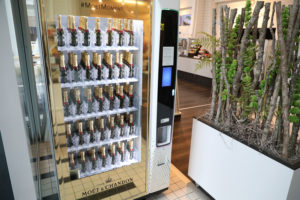 One may think that CHANDON California is the only winery in the Chandon portfolio but in actuality this a very international company with 6 wineries and or vineyards located on four continents and in six countries including Mendoza, Argentina which was the first Chandon winery outside of France (1959), Napa Valley California (1973), Garibaldi Brazil (1973), Yarra Valley Australia (1986), Ningxia China (2013) and Nashik India (2014). In 2021 updated and fresh branding was revealed for wines produced at all of the Chandon wineries. This significant and thoughtful effort was the first new look to packaging in over 60 years. The ‘mothership’, Moët et Chandon is headquartered in Épernay, France. The sun truly never sets on the Chandon global empire.
One may think that CHANDON California is the only winery in the Chandon portfolio but in actuality this a very international company with 6 wineries and or vineyards located on four continents and in six countries including Mendoza, Argentina which was the first Chandon winery outside of France (1959), Napa Valley California (1973), Garibaldi Brazil (1973), Yarra Valley Australia (1986), Ningxia China (2013) and Nashik India (2014). In 2021 updated and fresh branding was revealed for wines produced at all of the Chandon wineries. This significant and thoughtful effort was the first new look to packaging in over 60 years. The ‘mothership’, Moët et Chandon is headquartered in Épernay, France. The sun truly never sets on the Chandon global empire.
The man responsible for the vision of expanding Chandon outside of France was Count Robert-Jean de Vogüé (died in 1976). He lived a memorable life having led the resistance movement in Epernay in the early 1940s, only to be arrested and sentenced to death; he worked in labor camps in Germany under miserable conditions and was eventually rescued by British paratroopers in May 1945. He later became the managing director of Moët & Chandon. It was under his leadership that Dom Perignon was built into a known luxury bottling. Several important quotes are attributed to the man, including, “We must export know-how, not bottles”, “We should always be a quarter of an hour ahead” and, “Too many Frenchmen close their shutters, I have opened many windows.”
Moët has placed a very limited number of vending machines in luxury spaces in select locations around the planet (primarily resorts). The first such Moët vending machine we saw was at the Grand Resort Bad Ragaaz in Bad Ragaaz, Switzerland owned by the Schmidheiny family, the same family that owns Cuvaison in Napa Valley. Several other Moët vending machines are placed in other parts of Europe and in the U.S. There is at least one of these machines in the Caribbean at the Seven Stars Resort & Spa in Turks & Caicos. They serve up 200-millileter bottles including of the Chandon Imperial Brut and Imperial Rosé. We haven’t yet ordered a bottle from one of these machines but we heard they accept only branded gold coins. Each machine dispenses a complementary flute. Enjoy your #MoëtMoment or #ToastWithMoët.
MOET ET CHANDON, ÉPERNAY FRANCE
Moët et Chandon was founded in 1743 as Moët et Cie (Moët & Co) in Épernay by Claude Moët, a winemaker and wine merchant. Moët was the first winemaker in Champagne to focus entirely on sparkling wine production. The company took its current name in 1833. Long associated with luxury, some of the winery’s first clients were some of the most well to do people in France. In 1987 Moët et Chandon merged with Louis Vuitton and became LVMH (Louis-Vuitton-Moët-Hennessy).
A visit to the maison is a world of elegance, opulence and refined luxury – framed by an inviting exterior, a lavish interior, endowed with the rich heritage of the company, complemented by well-dressed employees and the feeling of refinement one has when enjoying some of their nectareous products.
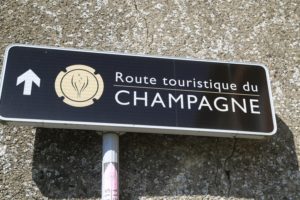 Moët et Chandon is located in the heart of Épernay; there are no vineyards on site – however the company owns some nearly 3,000 acres of vineyards in the Champagne region and purchases additional fruit from other growers. Visitors taking a tour of the historic caves can park across the street on one of the side streets (parking is metered). Prior to tours, guests will wait in the large salon. The highlight of the tour is a visit to the 28km of caves spanning several levels located directly below the maison and underneath numerous streets of the city spanning some 10 to 30 meters (30 to 100 feet) underground. Some of these original caves date back to 1743. One of the tour guides estimated there are around 1000 km of tunnels in Champagne. Like other caves in parts of Champagne the tunnels are carved out of a white chalk (one can feel the walls are slightly damp to the touch).
Moët et Chandon is located in the heart of Épernay; there are no vineyards on site – however the company owns some nearly 3,000 acres of vineyards in the Champagne region and purchases additional fruit from other growers. Visitors taking a tour of the historic caves can park across the street on one of the side streets (parking is metered). Prior to tours, guests will wait in the large salon. The highlight of the tour is a visit to the 28km of caves spanning several levels located directly below the maison and underneath numerous streets of the city spanning some 10 to 30 meters (30 to 100 feet) underground. Some of these original caves date back to 1743. One of the tour guides estimated there are around 1000 km of tunnels in Champagne. Like other caves in parts of Champagne the tunnels are carved out of a white chalk (one can feel the walls are slightly damp to the touch).
Of the millions of bottles produced each year approximately 20% are still riddled by hand including their large format bottles which do not fit into the gyropalette (a machine that automates the riddling process). And only about 2% of their entire production are vintage bottlings.
At one point in the tour guests will be surrounded by bottles of aging Dom Perignon (some of the finest, most well-known and expensive bottles of Champagne in the world). Dom Perignon is a vintage Champagne and is only produced in years of exceptional quality – Moët et Chandon first produced this wine in 1921. It must age for a minimum of 12 years before being released. “Go further”, is what Mr. Amine Ganhem, the enologist and innovation manager at Dom Perignon mentioned several times to us about the level of detail and precision that goes into making these coveted wines; this could easily be the motto of Dom Perignon.
The wines of Dom Perignon are made in a reductive style, meaning throughout their fermentation and aging the wines avoid as much oxygen contact as possible. They never experience barrels during any of the fermentation or maturation. And based on aging times, there three different stages of Dom Perignon called plentitudes. The P1 bottling is aged for 7-9 years before its release, the P2 bottling is aged 12-14 years before release and the very limited production P3 is aged for a minimum of 20 years before it is released. The two styles of Dom Perignon produced each year are Dom Perignon Brut, a wine made from Chardonnay and Pinot Noir and Dom Perignon Rosé, a wine made primarily from Pinot Noir.
And while touring the caves guests will also see a large, engraved wine cask that was given as a gift to Jean Remy Moët (Claude Moët’s grandson) by Napoleon (a friend and a client of the winery) in 1810. After the tour guests will enjoy several Champagnes in a special tasting salon also located underground. Tours will culminate with a visit to the ’boutique’, a high-end retail space showcasing their wines including vintages of Dom Perignon. Private tours can also be arranged in advance.
The spectacular Résidence de Trianon estate (orangerie) and gardens across the street were constructed between 1805 and 1817 for Jean-Rémy Moët’s two children and were used as private residences for many years. Today this estate is often used for special events and as a reception area for VIPs. And Moët et Chandon has owned Château de Saran since 1801 – located about 15 minutes from the maison and used for hosting guests, private parties and other select events.
For more information and to reserve a tour & tasting, visit: www.moet.com
exterior
reception/entrance rooms
caves
the boutique
Épernay, France
Château de Saran, Champagne
This stately old building was built in 1801 as a hunting lodge for Jean-Rémy Moët, the grandson of the Moët & Chandon’s founder. This property is only a 15-minute drive from Épernay. The property changed hands a number of times over the decades including to Jean-Rémy’s son, Victor Moët who transformed the space into a chateau. In 1954 the property was sold to Moët & Chandon. The company made major renovations to the chateau for two years which were completed by 2019. Today, it is used for hosting VIP guests’ (invitation-only in one of 12-luxurious and themed rooms) and private functions. The well-manicured grounds are stately and spacious.
Loge de Vigne du Mont Aigu, Moët et Chandon
This structure is perched on top of a hill within eyesight of and short drive from Château de Saran. Loges or vineyard huts were originally constructed to store materials for vineyard workers and also provide shelter. Many were not as nice as this one and were built built as basic structures. This one is constructed from brick and slate rock. Many of these shelters have since been torn down as modern vineyard management has dictated less of a need. But some have also been preserved. Not only limited to the Champagne region, we’ve personally seen these structures in other wine regions including in Switzerland.
Fort Chabrol – Institut de Recherche Viticole et Oenologique, Épernay
Founded in Épernay in 1900 by Moët et Chandon and known then as the Moët & Chandon Practical School of Viticulture, it would later play an important role in the fight against phylloxera. This site was added to the UNESCO’s World Heritage List in 2015. A short path runs next to the vineyard in front of the institute with several informative plaques in French describing viticulture practices.
Moët et Chandon Production Winery, Mont Aigu
Moët et Chandon maintains a large production facility (nearly 65,000 square feet) about a 5-minute drive from the tiny town of Oiry and less than a 15-minute drive from Épernay. It was completed by 2016.
CHANDON Argentina
This was the first Chandon winery founded outside of France; it was established in 1959 with the winery opening in Mendoza, Argentina in 1960. Jean de Vogué, the Chairman of Moët & Chandon requested their winemaker at the time, Renaud Poirier to travel parts of the world and identify premium sparkling wine locations. He located the site of the present-day CHANDON Argentina in Luján de Cuyo; it is only about a 30-minute drive from central Mendoza.
The original office buildings still exist on site – a reminder of their beginnings; the satellite company was small at the time as only 15 people were employed. The winery property is 20 hectares, however CHANDON Argentina owns some 80 hectares total in the Mendoza region ranging from elevations between 980 and 1,500 meters. Production here is exclusively on sparkling wines.
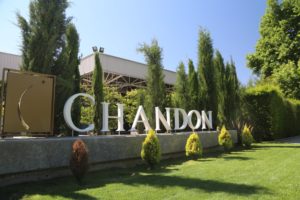
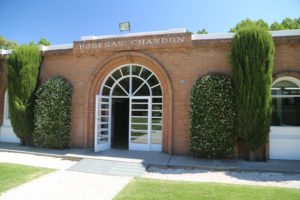 While there is a Chandon in the neighboring country of Brazil, it is the CHANDON Argentina that is responsible for distribution in Latin America. CHANDON Brazil primarily focuses on the Brazil market. And in Argentina, CHANDON Argentina has about 60% of the domestic sparkling wine market.
While there is a Chandon in the neighboring country of Brazil, it is the CHANDON Argentina that is responsible for distribution in Latin America. CHANDON Brazil primarily focuses on the Brazil market. And in Argentina, CHANDON Argentina has about 60% of the domestic sparkling wine market.
Champagne is known for its wine of the same name; Cava is associated with Spain and Prosecco with Italy. When no regional word is used, the default terminology is sparkling wine. Argentina has not yet identified an iconic word for its sparkling wines – perhaps the word, burbujas (bubbles) comes the closest to identifying sparkling wines from the country. And perhaps not a surprise, this is the only Chandon that produces a sparkling wine from Malbec.
One of their more sought-after wines is Baron B, named in honor of the wineries’ first president, Baron Bertrand de Ladoucette. This wine is limited production with no distribution outside of the winery. CHANDON Argentina also produces several unique and intriguing sparkling wines including several products meant to be paired with ice. Take Delice (meaning delicious in French) for example; this wine was created with the youthful palate in mind. It is a blend of Chardonnay and Pinot Noir with Sémillon, and Petit Manseng added later in a process called licor de expedición or dosing, a process that gives this wine its semi-sweetness.
The Apéritif is a sparkling fruity style wine made from Chardonnay, Pinot Noir and Sémillon but is infused with a variety of over 50 spices and herbs. Also slightly sweet, this wine is dangerous – one continues to reach for the glass due to its seductive profile on the palate! Unfortunately for the global market it is effectively unavailable as it is only made at CHANDON Argentina. During our next trip to South America, we may make a special trip to the winery just to enjoy this wine again.
Tours and tastings are available by appointment (allow about 75 minutes) and include an overview of the properties’ history, a visit to a small demonstration vineyard on the grounds and a walk-through part of the winery. Tours are conducted in both Spanish and English if necessary. There is no cave at this Chandon, rather the cellar was dug out below ground and contains the aging wines – no riddling by hand occurs rather the wines are turned with gyropalletes.
The tour culminates with a tasting in a side room in the hospitality center. Private tastings can also be arranged following tours; these are hosted in a small house. Weather permitting, following the primary tasting, guests are allowed to bring their glasses outside and enjoy drinks among the beautiful gardens and grounds.
Like the former Étoile at CHANDON California, CHANDON Argentina offers lunch dining at the Bistro Chandon restaurant on site including options for multi courses paired with a variety of their sparkling wines.
CHANDON also operate Moët Hennessy Argentina in the center of Buenos Aires, the company’s corporate office focusing on developing and marketing their various brands. For more information or to arrange a visit to the winery, see: www.chandon.com.ar
exterior
hospitality
private tasting salon
winery
restaurant
caicayen vineyard
CHANDON AUSTRALIA
CHANDON Australia is located about an hour’s drive (with no traffic) from central Melbourne in the Yarra Valley. The winery and visitor center are located along the Maroodah Highway in an area known as the “golden mile” named for several premium producers located along this part of the highway.
Of the more than 900 places and spaces we have personally visited around the planet strongly connected to wineries or brands in Napa Valley through ownership or heritage, a visit here was one of our most memorable experiences. During our stay, we had the perfect combination of weather including clear skies on an early summer day, met lovely people, tasted great wines, and were inspired by the overall feel of the property.
The Yarra River Valley is well-known as a cooler climate wine region and similar to Napa Valley, grapes were first planted in the region in the 1830s. The number of wineries today has grown significantly especially over the past 20 years; today there are over 80 cellar doors in Yarra Valley. Prominent varieties include Chardonnay and Pinot Noir along with Cabernet Sauvignon and Merlot among others.
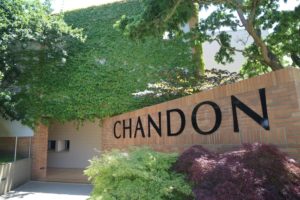 CHANDON Australia was established in 1986. This Chandon was built on an old dairy farm called Green Point – the original house built in the 1880s used during the farming days was remodeled and still stands on the property.
CHANDON Australia was established in 1986. This Chandon was built on an old dairy farm called Green Point – the original house built in the 1880s used during the farming days was remodeled and still stands on the property.
And the winery’s early beginnings had a connection to Napa Valley. John Wright, who was in charge of CHANDON California visited Victoria in 1982. He was impressed with what he saw and along with Phillipe Coulon hired winemaker Tony Jordan, the man credited for founding CHANDON Australia and who was their first winemaker. Later he was involved when Chandon founded their operations in China and in India in 2013. He passed away in 2019. The first wines from CHANDON Australia were released in 1989.
Vineyards were first planted on site in the mid 1980s, and a number of which can be seen surrounding the winery and visitor center. Guests can taste without needing an appointment at the ‘splash bar’ while private tasting experiences by appointment only are held upstairs in one of several rooms.
Tours are generally self-guided – a small wine tour route is located within several rooms and highlights some of the Chandon history and offers guests a peek through the windows into the riddling cellar. Guided tours, only offered on Sundays are appropriately called the Chandon Sunday School – offers a behind the scenes looking into the winery operations followed by a tasting.
CHANDON Australia owns several vineyards in this part of Australia including the original Green Point Vineyard (on site of the winery) at an elevation of about 300 feet. The also own several other vineyards outside of the Yarra Valley in the King Valley and Strathbogie – both several hours drive from the Yarra Valley at elevations up to about 2,600 feet. In addition, they purchase grapes from more than 40 growers in the Yarra Valley.
This is one of several Chandon’s to offer a full restaurant on site. During a recent visit we enjoyed freshly shipped in oysters from Tasmania, a delicious entree of lamb and sorbet and chocolate mousse for dessert. Several sparkling cocktails are offered with meals. While the food is delicious, so too are the views, especially on a clear spring or summer day – with seating both inside and outside on the terrace.
The flagship bottling at this particular Chandon is Étoile, a reserve multi-vintage blend of 8 different vintages. This wine is blend from wine set aside each year from their Vintage Brut. As of our latest update to this review, the only two years they have not released a Vintage Brut were in 2000 and in 2020. And the most recent release of Étoile included vintages dating back to 2005. This wine also sees some time in oak barrels during its extended aging.
For more information, to purchase wines, to join Club Chandon or to schedule a tasting and or culinary experience, visit: www.chandon.com.au
Grounds + Vineyards
Hospitality Center
Restaurant
Wine Tour
CHANDON Brazil
We were originally on our way to CHANDON Brazil from Uruguay when our good friend from Lima, Peru called and informed us she had breast cancer. We immediately pivoted countries and visited her in Peru instead. It wasn’t until several years later we were able to visit CHANDON Brazil. The winery is located in the state of Rio Grande do Sul in Serra Gaúcha, a short drive from the center of the city of Garibaldi. Airports used to reach this part of Brazil include Caxios do Sol (about a 45 minute drive) and Porto Alegre (about a 90 minute drive).
This is Brazil’s most prominent wine region and is well-known domestically. However, it is not yet well known internationally as most of the wineries here sell and promote primarily to the Brazilian market rather than internationally. Besides wine, the state of Rio Grande do Sol is also known for its furniture production and other agricultural crops including soybean, corn and rice.
After two years of construction, the winery officially opened on October 29, 1973, several months after CHANDON California’s first harvest but before the winery at CHANDON California was yet built. In 1977 the first CHANDON Brazil sparkling wine was sold, the Chandon Brut. Now Director at CHANDON Brazil, Philippe Mevel joined the team in 1990 with the intent to stay for 6 months. He has now been with CHANDON Brazil for more than 30 years. His direction and contributions have been an integral part of their growth and development.
1998 was an important year for the winery; besides being their 25 anniversary, they became the first Chandon winery and first winery in Brazil to exclusively produce sparkling wines. Prior to this they were producing approximately 50% still and 50% sparkling wines. Around the year 2000 they were producing approximately 1 million bottles a year with a need to further increase production. The decision was made to purchase another site about a 5 hour drive south of the winery in Encruzilhada do Sul, in the Serra das Encantadas also located in the state of Rio Grande do Sul. This 250 hectare vineyard is located at 350 meters above sea level; approximately 130 hectares are in production with the availability to plant 20-25 more hectares as needed. And the vineyard is planted to 73 hectares of Pinot Noir, the largest planting of this variety in Brazil. CHANDON Brazil was the first producer of grapes from this region with their first harvest occurring in 2003.
In 2001 CHANDON Brazil introduced a lighter bottle reducing the weight from 890 grams to 775 grams – in the process, saving 197 tons of glass that year. Rather than import glass, they purchase from a glass manufacturing company in Porto Alegre. In 2012 they received the first of their ISO certifications including 9001 and 22000; they also have 9000 and in 2023, received 14001. And in 2020, CHANDON Brazil received their PIUP certification for sustainable viticulture practices. Since 2020, herbicides are no longer used to manage their cover crops at the vineyard at the winery and since 2021 at their vineyard in Encruzilhada do Sul.
Unlike locations of other Chandon’s, water availability here is not an issue. The region experiences 4 distinctive seasons and averages 150mm of rain/month or 1,800 mm annually (71 inches/year) spread out fairly evenly throughout the year; as a result, the vegetation remains green year round. Generally speaking 2 days out of 3 are sunny. The rain and higher humidity significantly increases pressure from Downey mildew and other fungal diseases. Careful management of year round cover crops helps mitigate botrytis. Cover crops include clover and turnips with cuttings from pruned vines composted back into the soils to help increase organic matter. They spray smartly, only if they need to, with the timing of the spray extremely important. The primary soils at the winery are basalt with clay and at their southern property, decomposed granitic rock (drains extremely well).
Budbreak typically occurs in September followed by bloom in late October and early November. One harvest occurs each year, starting in January and finishing in February. Approximately 1/3 of the grapes are from vineyards owned by CHANDON Brazil and 2/3 from growers they work closely with. And some of their growers have been selling grapes to them for two and three generations.
CHANDON Brazil first began producing wines from Chardonnay and Pinot Noir. But in the late 1980s additional varieties were introduced including Riesling Italico (a variety from Italy) that has been growing in the region for more than 100 years and Muscat Canelli. In addition to using grapes from estate vineyards, they work with approximately 60 growers. The grapes are harvested by hand in the early morning into small crates with open ventilation. The grapes are always delivered to the winery at a cool temperature.
When the grapes are pressed off, a Bucher Vaslin pneumatic press is used; it is sophisticated enough that it can be programmed to not press any green grapes within the ripe bunches. Base fermentations are usually conducted between a temperature range of 16-18 degrees Celsius. Unique from the other Chandon’s is CHANDON Brazil uses tanks entirely for fermentation (both primary and secondary) and aging. Making wine similar to the méthode Charmat (rather than méthode traditionnelle) means the secondary fermentation is conducted in pressurized tanks rather than in bottle. As a result, the winery does not have to riddle the wines; their are no gyropalettes here. Blending trials are an integral part of their winemaking and are conducted prior to bottling; these sessions always include their growers The wines typically spend 4 to 12 months in tank and then another 3 to 18 months aging in bottle prior to release.
Grounds + hospitality
After three years of renovation and developing additional hospitality spaces, CHANDON Brazil reopened for visits in October 2023 at Casa Chandon Garibaldi. Visits are by walk-in or by reservation and include several tasting options ranging from 45 minutes to two hours. A cozy container overlooks their vineyard and is used for hosting private tastings. Weather permitting, a garden is available for guests as is a terrace featuring comfortable seating. Small bites are also available to pair with the wines including during our visit rib croquettes, porcino mushroom arancini, tapioca cubes with bacon jam and several types of macarons. A small boutique sells all their wines including exclusive bottlings. And CHANDON Brazil sometimes offers pop up events and tastings in major cities in Brazil including São Paulo and Rio de Janeiro.
Select Wines
For reference these were all tasted in September 2024.
The CHANDON Brazil Reserve Brut is 40% Pinot Noir, 30% Chardonnay and 30% Riesling Italico. This wine is medium gold in color; it offers aromas of pear and apple, a light and delicate yeast character, some floral overtones and subtle notes of honeycomb. Balanced and easy drinking, the palate sports a softer mousse accompanied by plenty of brightness and freshness. This wine offers flavors of red delicious apple, mandarin, a hint of lemongrass and lingers with a creamy textured finish. For best results, serve poolside on a hot and humid day.
The CHANDON Brazil Blanc de Noir, Pinot Noir is 100% varietal Pinot Noir. This wine is medium yellow in color; the bouquet reveals aromas of pear, red apple, raspberry and almond accompanied by lighter notes of pink peppercorn and hazelnut, both showing more in the background. While the nutty character is perceptible on the bouquet it is more noticeable on the palate including of hazelnut. And according to Meval, this character has become more pronounced from its time aging in the bottle. Additional flavors include Golden delicious apple, pear and dried fruits of apricot and mango. The finish is fresh, bright and mouth watering. This wine is Extra Brut with 6 grams/liter of residual sugar; it is a blend of approximately 1/3 grapes from the 2020 vintage and 2/3 from the more abundant 2022 vintage. This wine is built for finesse and delicacy. This was Brazil’s first sparkling wine to receive a sustainable viticultural certification in 2020.
The CHANDON Brazil Cuvée 50 Años is a special bottling produced to celebrate 50 years of winemaking in Brazil. And in the theme of 50, this wine was aged an unprecedented 50 months in tank with its lees constantly suspended; 50,000 bottles were produced. This wine is a blend of 40% Pinot Noir, 30% Chardonnay and 30% Riesling Italico from vintages: 2016 (10%), 2017 (29%) and 2018 (61%). It is medium gold in color; the bouquet reveals scents of yellow peaches and nectarines, dried apricots, pineapple, orange blossom and a hint of hazelnut. On the palate there are flavors of Golden delicious apple, pineapple, honeycomb, mandarin and a note of hazelnut showing primarily on the finish. It’s creamy texture is complemented perfectly by its bright acidity. The extended finish keeps on giving in terms of flavor.
CHANDON Brazil sometimes produces a very limited production vintage bottling called Excellence; it is not always entirely made from the ‘best’ vintages but sometimes is produced from challenging vintages. Wines from exceptional blocks within their vineyard are isolated and tasted by their winemaking team. Every team member must give their approval or a lot will not make it into that wine. They are looking for lots that have a special ‘wow’ factor. In terms of quality, the bar is set extremely high with this particular bottling.
The 2013 Excellence took two years to prepare due to the challenges of the vintage (a rainy and very moist year). This wine remained in tank to fully integrate for four years from 2015 until 2019. It was bottled in 2019 and released in 2023. To date, this has been the longest from harvest to release wine that CHANDON Brazil has ever produced.
The 2013 CHANDON Brazil Excellence Brut is 55.4% Pinot Noir and 44.6% Chardonnay. This wine is medium yellow in color. The bouquet is elegant with aromas of honeycomb, chamomile, caramel, dried stone fruits including apricots and peaches, toast, dark plum and dried orange peels. Its complexity is quickly evident both on the bouquet and the palate. In terms of its flavor profile, there are notes of mandarin orange, yellow plum, pear and additional but subtle nuances of apricot and dried yellow peach. Texturally this wine features a pleasing roundness and softness, balanced nicely by its bright acidity. Its dosage was 8 grams/liter of residual sugar. This wine was well-worth the wait.
In 2020 and 2021 CHANDON Brazil experimented with creating a wine that was neither fined nor filtered and had no SO₂ additions. Happy with the results, they bottled their first commercial vintage in 2022, calling it Nevoa das Encantadas, a name which translates into English as: ‘mists of the enchanted’. From a nomenclatural perspective this name ties in with the cloudy look of the wine resulting from no fining or filtering and a similar look that sometimes occurs in their vineyard at Encruzilhada do Sul in Serra das Encantadas in the early morning from mists which rise above the soils. In addition, the granitic rock located in this vineyard contains crystals which sparkle under the light of a full moon.
This wine is carefully made with a strong emphasis on cleanliness and temperature control. The first and last press of the grapes are discarded; what Meval calls the heart of the press, is only used. The first stage of fermentation is at 15 degrees Celsius. The tank is then sealed and as the pressure builds, the temperature is lowered to around 11 or 12 Celsius. When the sugar drops far enough the yeast will compact themselves and begin cannibalization. But the wine is constantly stirred so the yeast are unable to bind together and eventually will die with nothing left to eat. The winemaking team heated samples of this wine at 30 degrees for a month to make sure no more fermentation would occur. After agitation is stopped in tank, they let the turbidity settle. Based on volume, in a 6,000 liter tank, about 1/3 of the juice was bottled based on its clarity, while the remainder was not.
The 2022 CHANDON Brazil Nevoa Das Encantadas Chardonnay is 100% varietal; this wine is noticeably cloudy and light green in color when served after the bottle has been sitting horizontal. To mitigate the lees/haziness keep the wine upright for at least 24 hours in a refrigerator prior to serving. For reference, we tasted this wine 2.5 years post vintage. The aromatics are fresh like these grapes were just harvested, sporting aromas of apple – reminding us of in our youth when we used an apple corer to remove skins and seeds prior to making apple juice. Other scents include that of Bosc pear, a white floral note and pineapple. The palate reveals flavors of apple skin, pear, red delicious apple and pineapple guava. Highly unique in terms of its production, it should be quickly consumed soon after opening. This wine is both refreshing and easy drinking.
The CHANDON Brazil Passion On Ice is a blend of 46% Moscato Canelli, 46% Malvasia de Candia and 8% Pinot Noir (with a small amount of Marselan for added color). It is salmon flesh/light copper in color. The bouquet is fruity and immediately inviting including scents of raspberry, watermelon, passion fruit, lychee and a note of dried thyme. The idea with this wine is to feel the intensity of the fruit both on the bouquet and the palate but without ever crossing into the territory of ‘too much’. On the palate there are flavors of watermelon jolly rancher, raspberry, white peach and white nectarine. One can feel the residual sugar but at the same time, a brightness and refreshing sensation from the acidity. This wine is 35 grams per liter residual sugar. It is a fun and highly playful bottling yet a seriously crafted wine. A pool and patio sipper. It is made for the Brazilian palate but if it could somehow be scaled for the world market – the demand most certainly would be there. And we also tried this on ice; it is even more refreshing and is already concentrated enough that the extra dilution does not immediately dissipate its flavors.
Vineyard + Winery
Replacing non native eucalyptus trees in and around their vineyard in Encruzilhada do Sul, CHANDON Brazil began working with several partners in 2022 to plant seedlings of native Butia odorato palm trees. Proper conservation of these young seedlings includes careful and seasonal livestock grazing practices. The fruits are edible. To date more than 3,000 of these seedlings have been reintroduced to the region.
Production as of our latest update to this review is approximately 3 million bottles per year. The wines are almost entirely sold domestically except for very limited distribution including to Angola (also a Portuguese speaking country). For more information, visit: www.chandon.com.br
CHANDON India
When I told my brother in law that we were visiting Nashik (pronounced like nuh-sheek) in India to try their wines, his response was something like, “when I was growing up in Chennai, Indian wines were not considered very good”. That was in the 1970s and 1980s. Things have changed in this regard with a select number of Indian wineries having elevated viticulture practices and winemaking, CHANDON India being on the forefront of doing so.
CHANDON India, depending on traffic and other variables such as road construction, is about a 5.5 to 6 hour drive from the Mumbai airport. From Nashik, CHANDON India is about a 45 minute drive. And from Nashik International Airport, the drive is about 30 minutes.
The decision to choose India and China as the most recent homes for their wine operations is a smart one; these are the two (by far) most populated countries on the planet with a growing population of wine consumers. And due to the size of both countries and wide variety of terroir including places conducive for growing wine grapes, in the past 20 years each country has increased the amount of vineyard lands.
CHANDON India owns approximately 21 acres including the winery with surrounding vineyards planted to Chenin Blanc, Chardonnay, Pinot Noir and Shiraz in rocky and well drained soils. This site is located between approximately 600 – 650 meters above sea level. They do not own, but their viticulture team manages another property of about 50 acres located at 300 meters above sea level in the Dhule District. Due to its lower elevation, it is a warmer site. And they contract with about 90 farmers for additional grapes.
Due to their climate, the grapes are pruned twice a year, once in April and then the primary pruning in advance of harvest is generally done in September. Any grapes produced outside of January and February are removed. Harvest is generally from late January into March.
This part of Nashik has a long history of growing table grapes and is the largest such region in India for table grapes. The CHANDON India driveway passes through rows of table grapes; just before harvest each of the bunches are wrapped in newspaper to help ensure even color for all the grapes and also protects against sunburn.
The property for CHANDON India was purchased in 2010. It took several years for the winery to be constructed; their first harvest was conducted at York Vineyards in 2013 and by 2014 Chandon’s own winery was finished. 60% of CHANDON India’s operations are powered by solar cells. And the wine tanks were all manufactured in Nashik and range in size from 500 liters to 51,000 liters. All production occurs on site including bottling, tirage, riddling using gyropalettes, disgorging, dosage, and packaging, although during harvest no wine is bottled. The minimum time the wine spends on the yeast is 18 months before being disgorged.
Founding winemaker Amrut Vare along with a viticulturist were the first employees of CHANDON India. Amrut has a winemaking background oozing international experience including stints in Oregon, Saint-Émilion in Bordeaux and also in India.
Visiting this property was like being in an oasis; it was calm, the temperature was perfect, the skies clear and the wines superb. Like the other Chandon winery properties, food is part of the experience, but here meals are only served on the weekends. CHANDON India does not export their wines, rather their focus is on the domestic market. All visits are by appointment and are often hosted by the winemaker. After arriving on the property guests will start their CHANDON India journey in the main visitor center followed by a visit to the adjoining Gallery Room for a look at Chandon’s history including watching a short video about CHANDON India. Tastings of their current release wines will follow either at one of their wine bars or weather permitting outside overlooking the picturesque grounds.
And with the relatively close proximity to Mumbai, home of Bollywood, CHANDON India sometimes hosts a limited number of events in that city.
Select Wines
For reference, these were all tasted in early 2024.
The CHANDON India Rosé of Shiraz is 100% varietal; this wine is salmon/copper color in the glass. The bouquet is delicate yet vibrant, offering lighter red fruit aromas including of strawberry, raspberry, red cherry, strawberry guava and a hint of grapefruit. The aromas are fresh, alive and elegant. The palate offers flavors of sour cherry, currant and not fully ripe strawberry. The natural acidity is clearly one of the stars of the show in this bottling.
The CHANDON India Brut is 70% Chenin Blanc, 15% Chardonnay and 15% Pinot Noir. This wine spent 30 months aging, more than the normal regiment due to issues around Covid. That extra time in the bottle is not a detrimental characteristic. It is medium golden in color; the bouquet is highly appealing with a focus on its fruit character but also complemented with notes of brioche and lightly toasted bread. It also offers scents of pear, citrus blossom and honeysuckle. Balanced, crisp, minerally, easy drinking and flavorful, the palate sports notes of ruby grapefruit, green apple, lemon/lemon meringue, a hint of lemongrass and a light note of toast completing the finish. It is citrus driven but not tart or tangy.
The 2021 CHANDON India Aurva Red Wine was their inaugural vintage of a still wine from their Nashik operations. In Sanskrit, Aurva means ‘of the earth’. This wine is 100% varietal Shiraz and spent 15 months in barrel of which approximately 60% was aged in new French oak barrels. It was then aged a year in bottle prior to release. The grapes were hand-destemmed prior to fermentation. It is deep ruby in color; extracting color from these grapes has never been a problem. The aromatics display a darker character including damp earth, gamey-like scents and some notes of dried mushroom. Spicy, yes. It reveals scents of both crushed black pepper and a woodsy spice. The palate is balanced and highly approachable in its youth. The savory and spicy characteristics on the bouquet continue onto the palate including peppery spices similar to crushed papaya seeds. The palate is darkly fruited with flavors including plum. Its texture is gentle featuring supple tannins. A light wood driven spice note shows deep in the finish. This bottling is ideal for pairing with some spicy foods including a variety of Indian curries.
The CHANDON India Delice is a blend of 60% Muscat, 20% Chenin Blanc and 20% Ugni Blanc. Prior to tasting this bottling, we had recently sampled freshly pressed Muscat juice from the 2024 harvest. The aromas of this variety are always highly distinctive by itself, but also tends to dominate in blends. This wine is pale yellow in color; the bouquet offers a diversity of springtime white florals including jasmine and honeysuckle. There are also scents of lychee. The palate reveals a wide range of flavors including pineapple, peach, nectarine, pomelo and lemon. In terms of measurable acidity, this wine has the most acidity of any wine they produce, however it balances out the residual sugar perfectly (between 38 to 40g/L). Despite only 20% of the total blend, the Ugni Blanc contributes a type of acid that Amrut refers to as elegant, rather than sharp or biting. This is a refreshing sipper on a warm day and is only available for purchase through the winery.
For more information or to schedule a tasting, please visit: www.chandon.co.in
Hospitality
Vineyards
Winery
STILL TO VISIT OTHER CHANDON WINERY PROPERTIES
Note: due to the international scope of the Chandon properties, the significant time and expenses needed to properly write a review of this storied brand based on personally visiting and tasting at all their international properties, this review will be updated very slowly over a span of multiple years.
CHANDON China

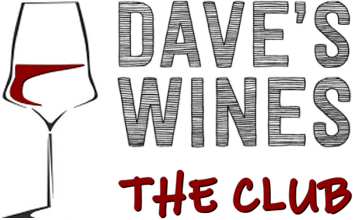




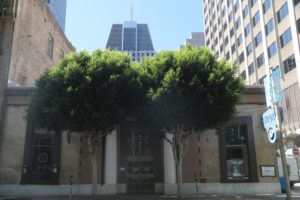
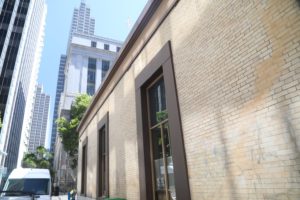
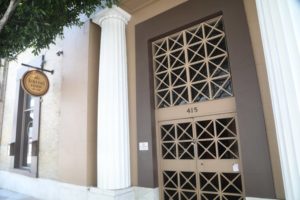
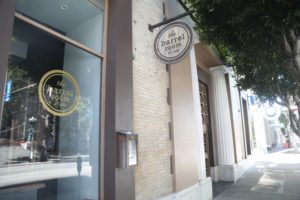
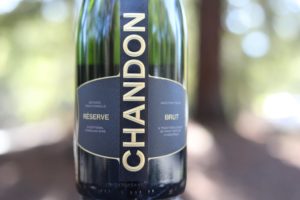
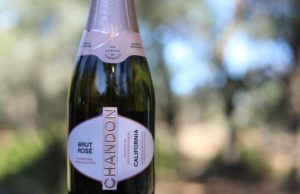
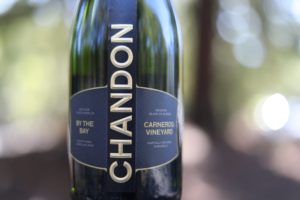
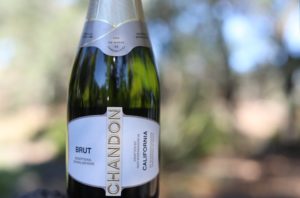
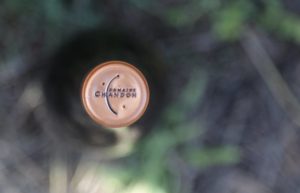
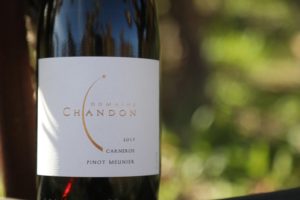
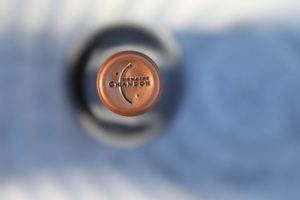
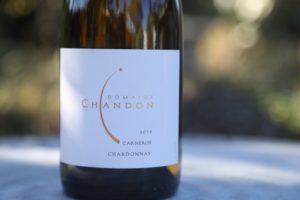
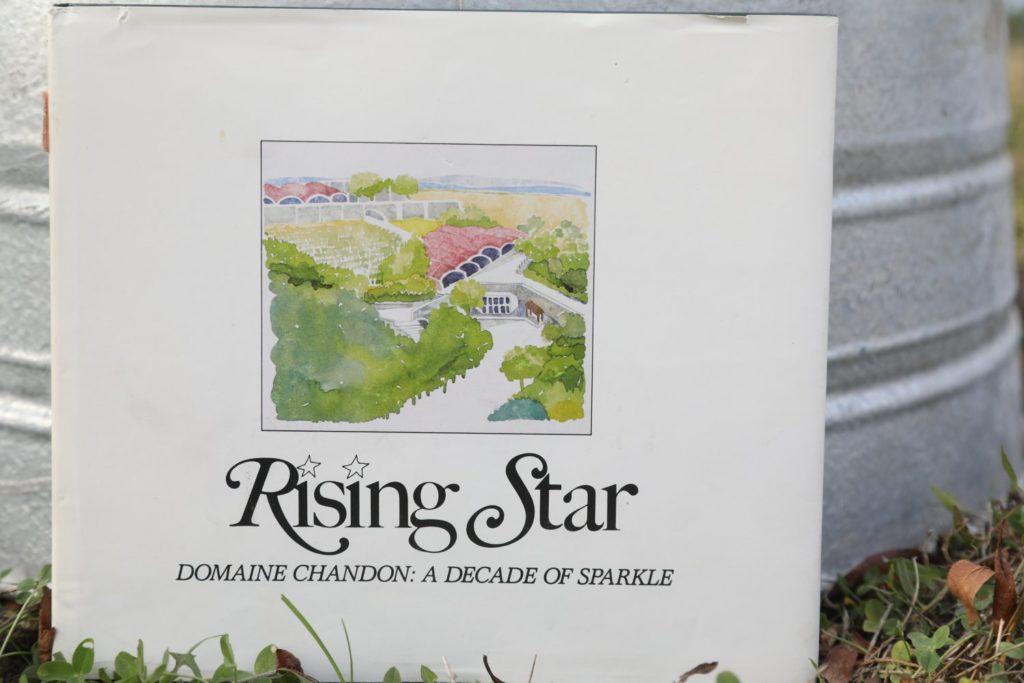
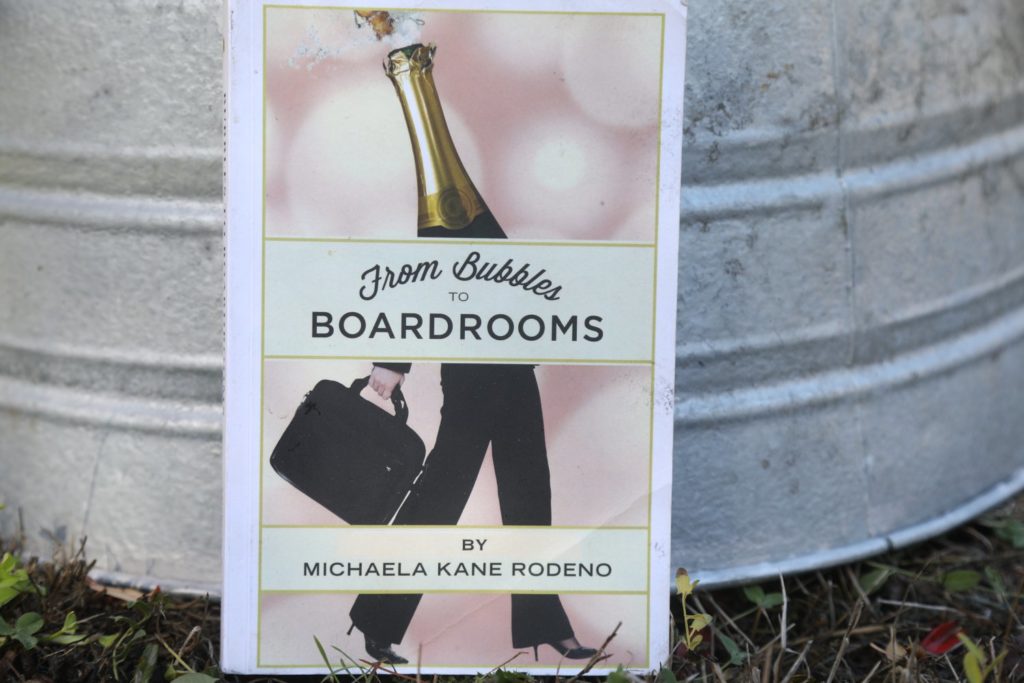
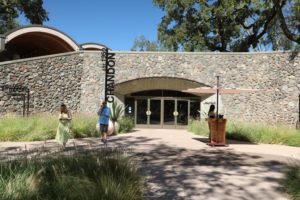
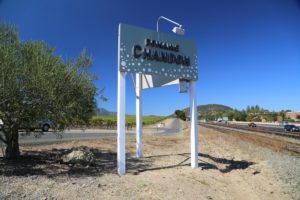
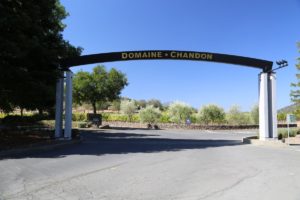
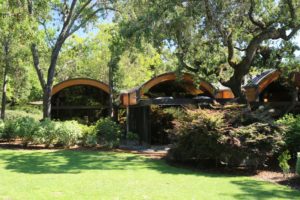
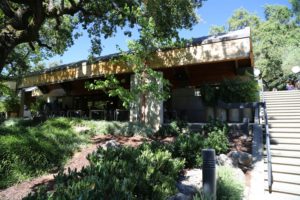
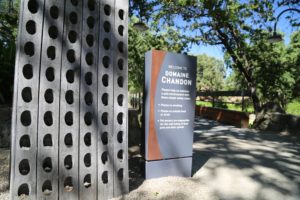
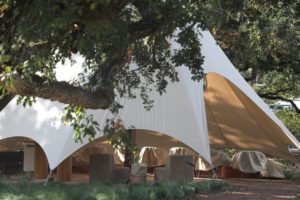
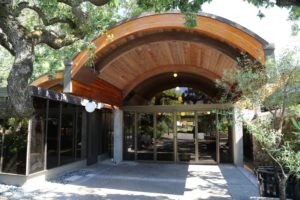
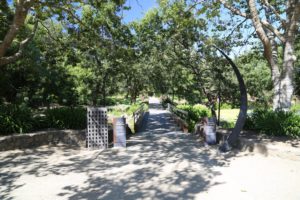
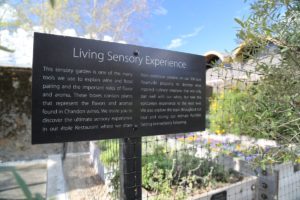
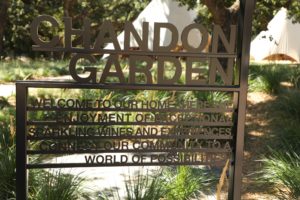
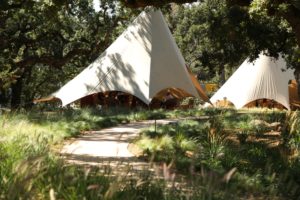
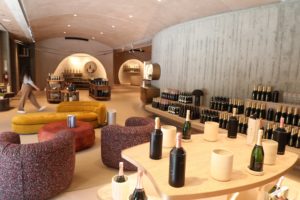
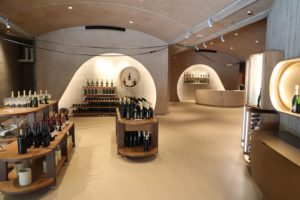
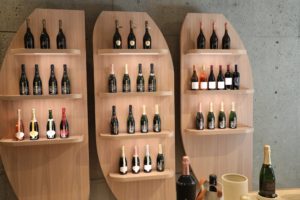
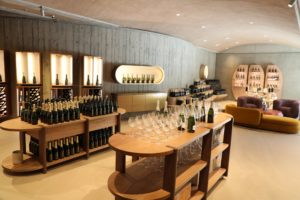
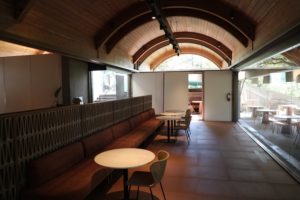
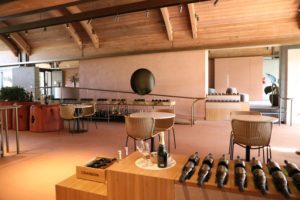
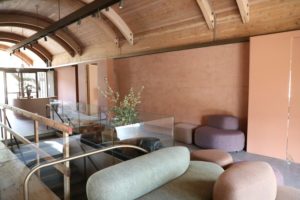
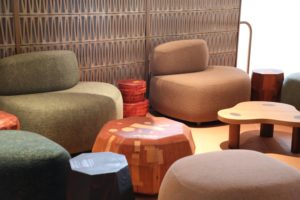
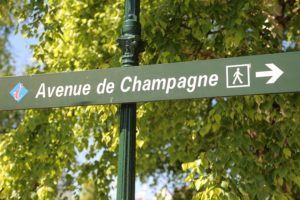
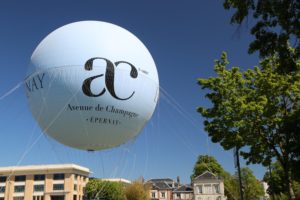
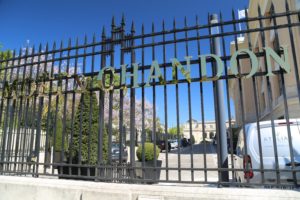
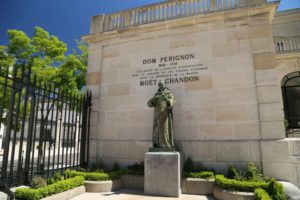
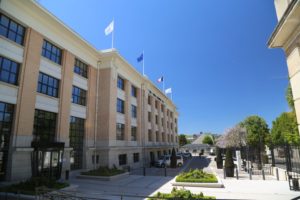
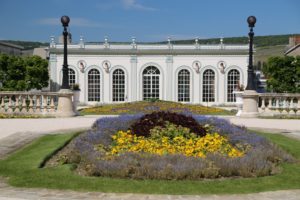
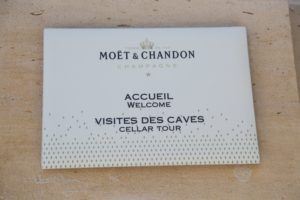
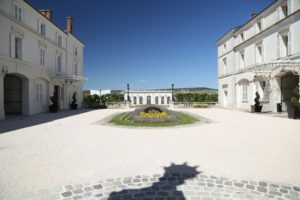
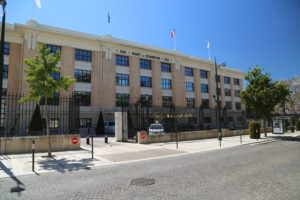
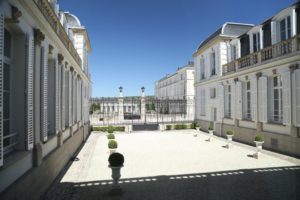
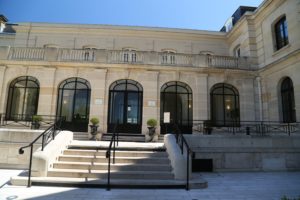
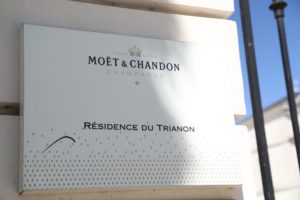

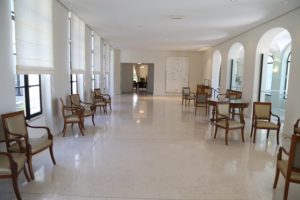
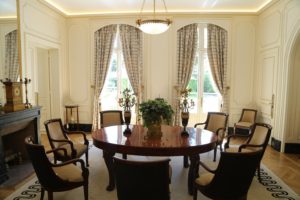
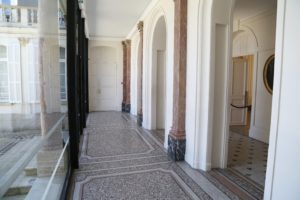
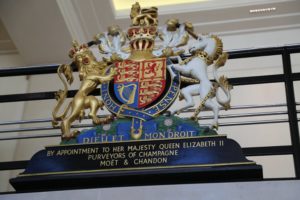
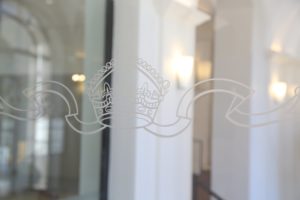
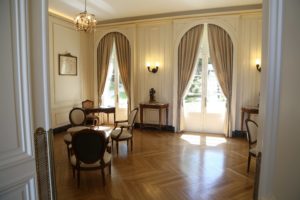
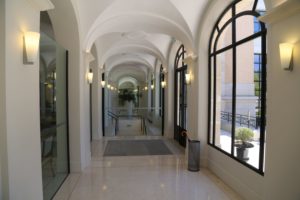
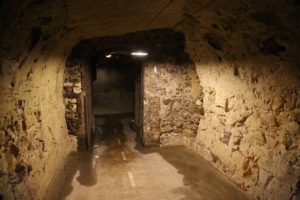
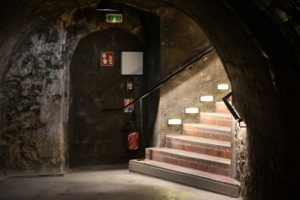
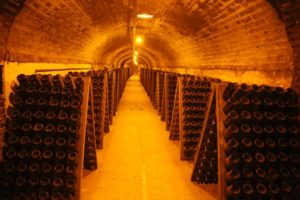
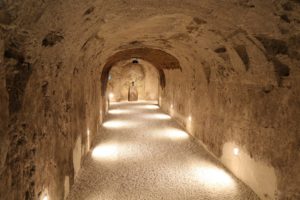
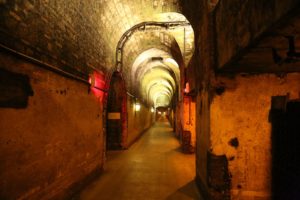
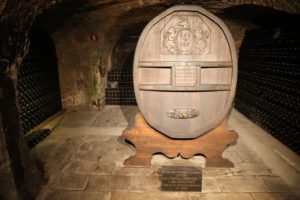
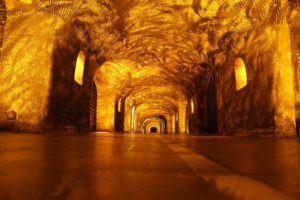
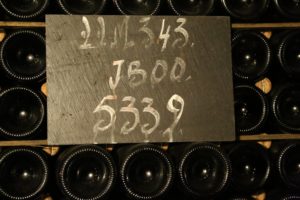
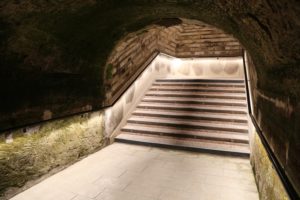
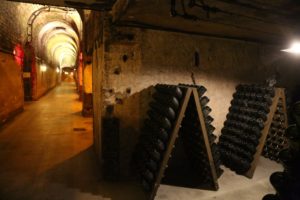
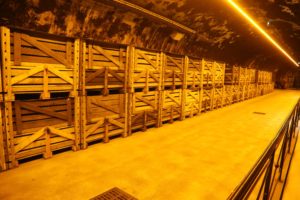
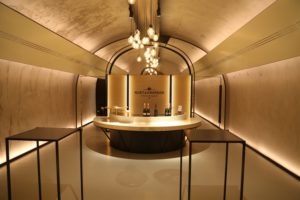

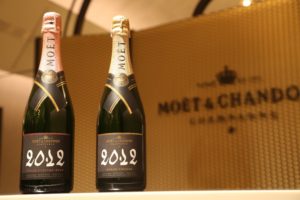
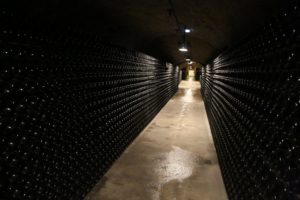
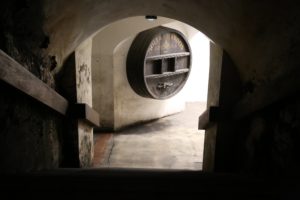
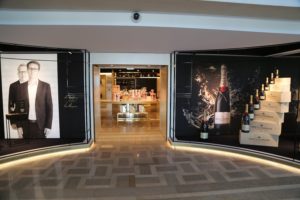
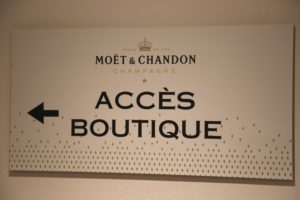
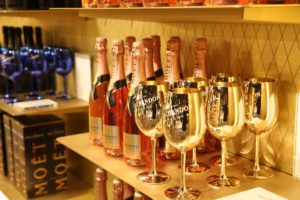
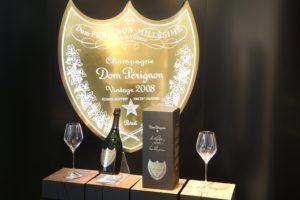
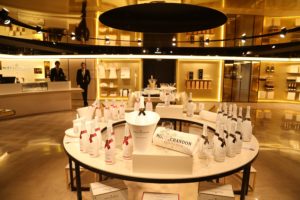
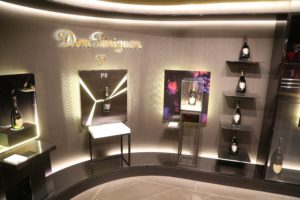
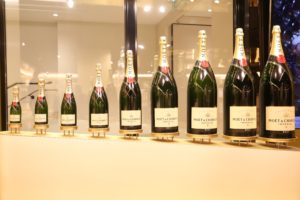
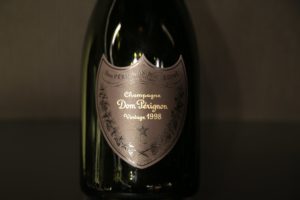
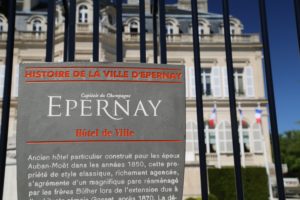
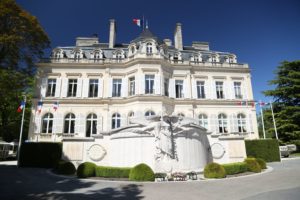
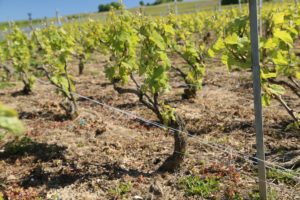

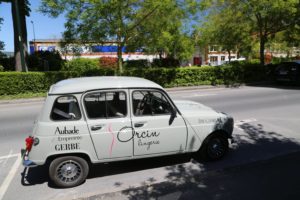
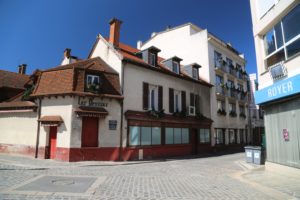
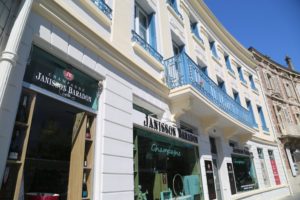
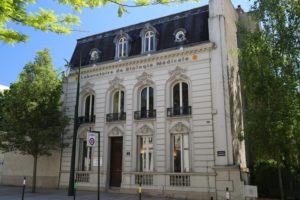
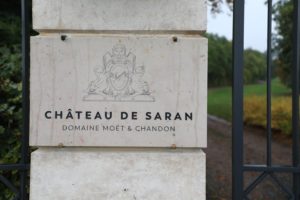
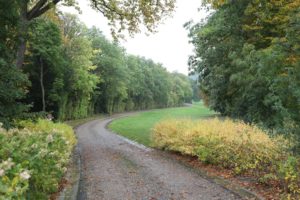
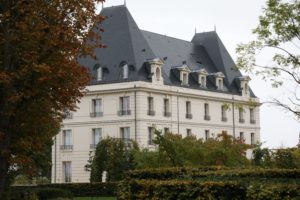
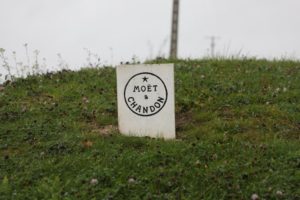
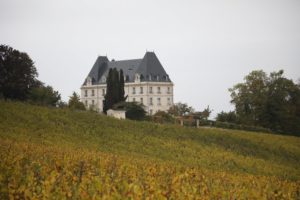

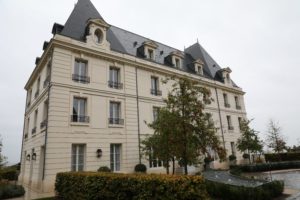
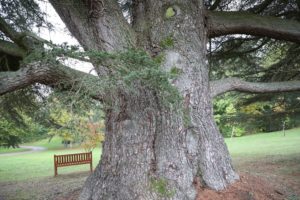
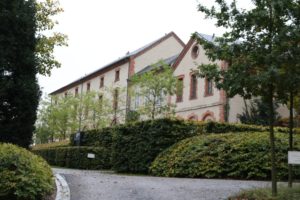
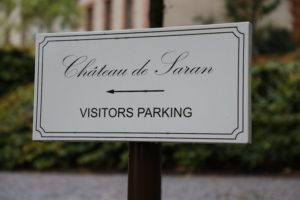
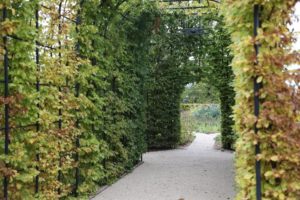
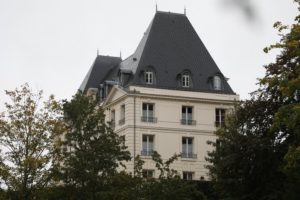
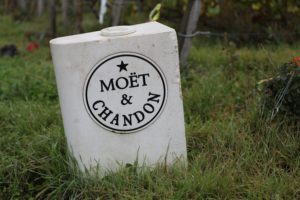
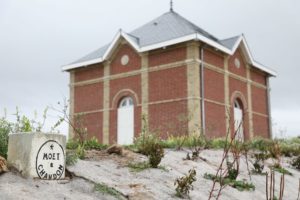
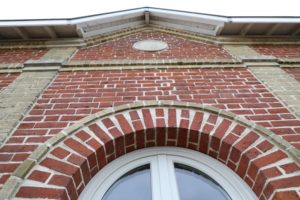
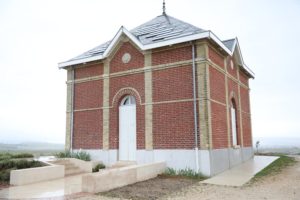
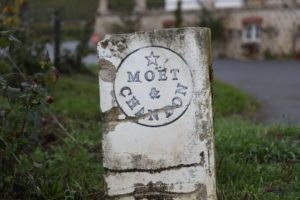
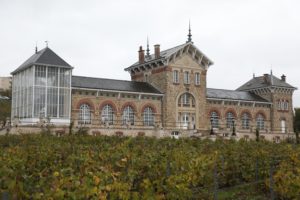
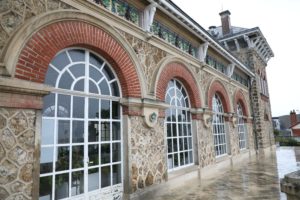
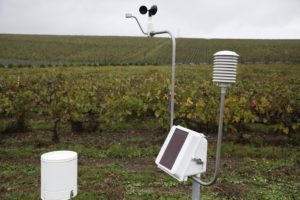

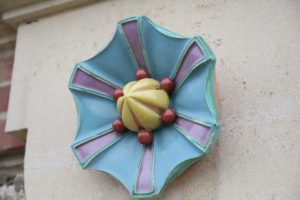
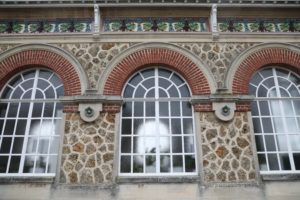
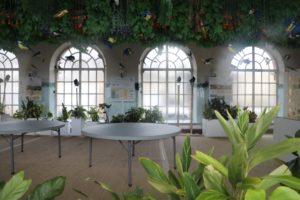
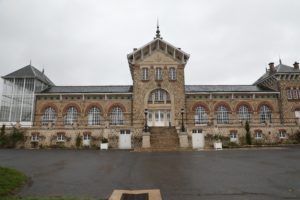
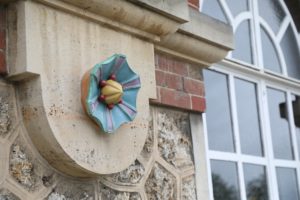
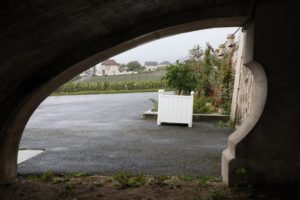



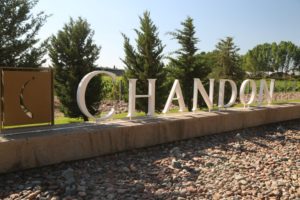
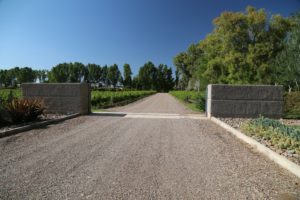
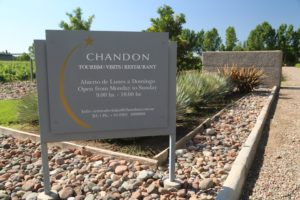
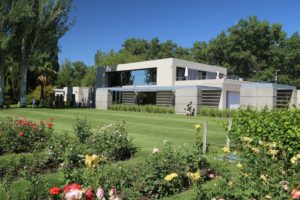
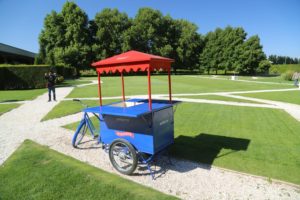
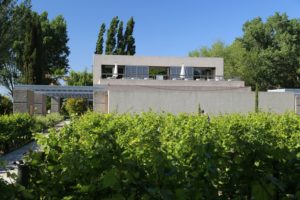
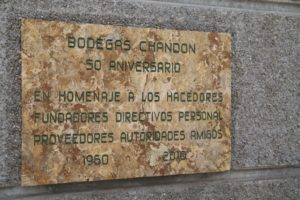
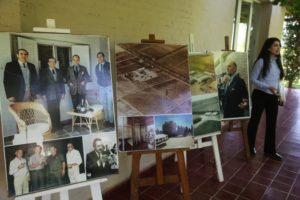
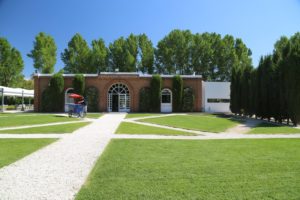
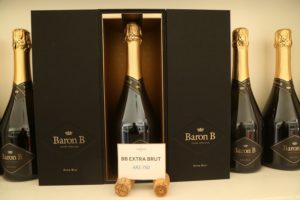
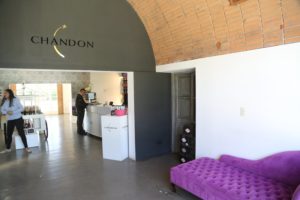
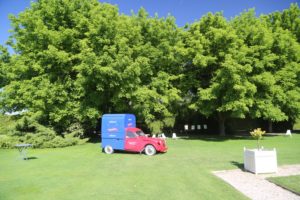
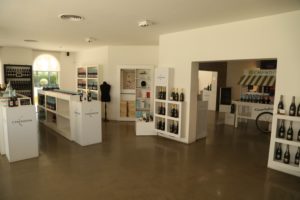
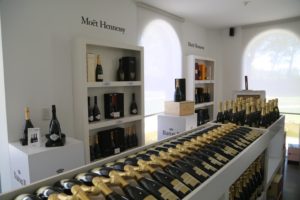
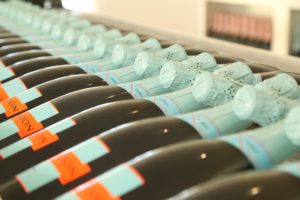
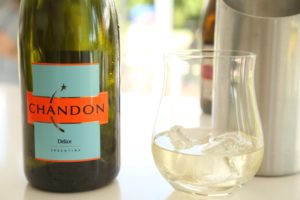
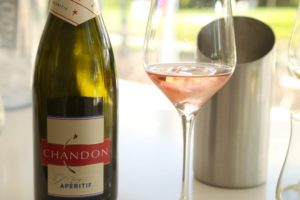
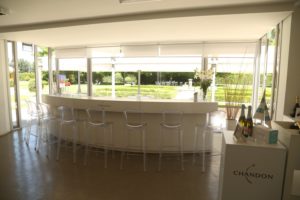
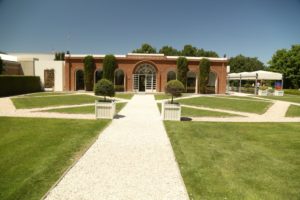
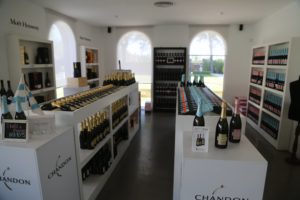
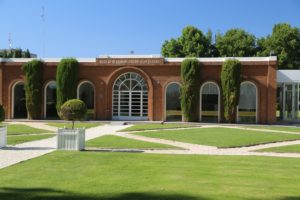
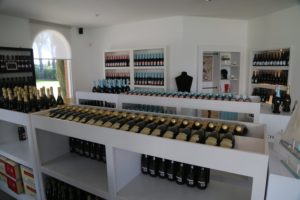
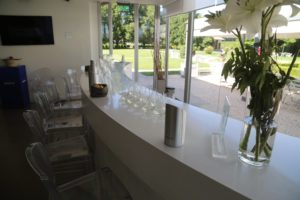
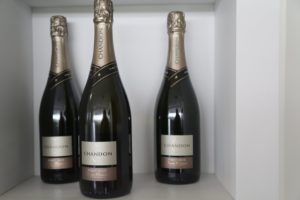
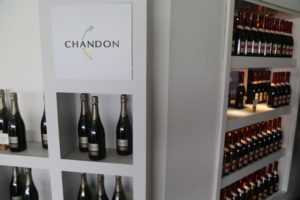
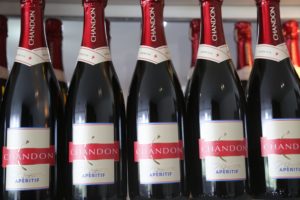
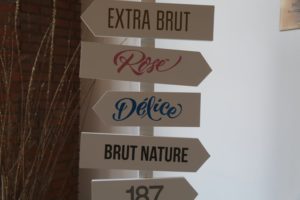
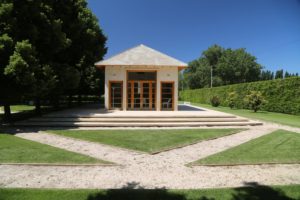
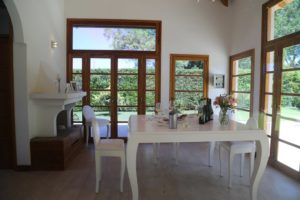
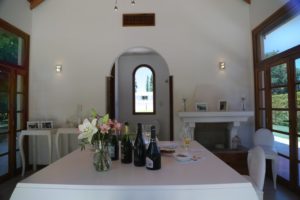
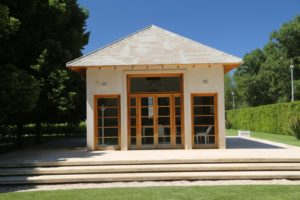
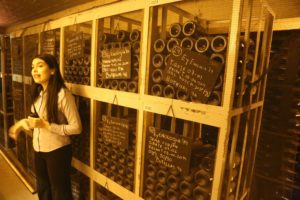
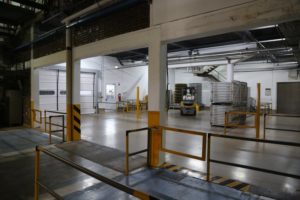
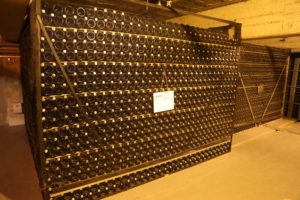
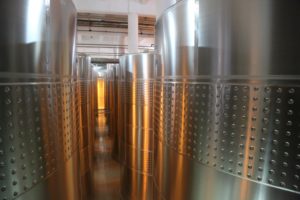
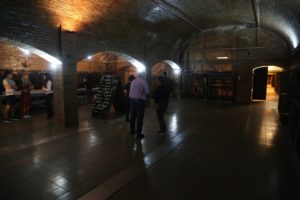
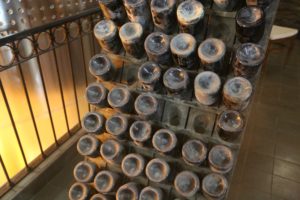
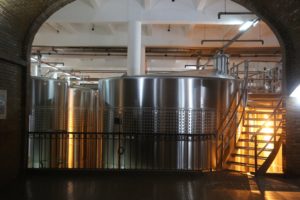
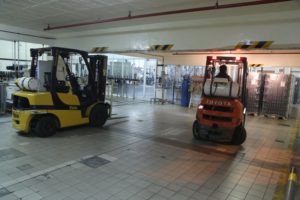
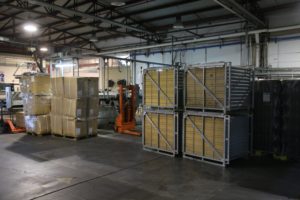
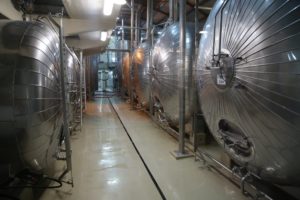
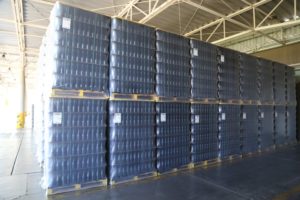
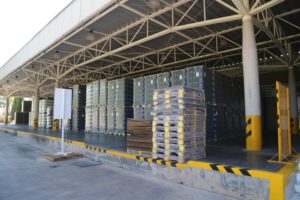
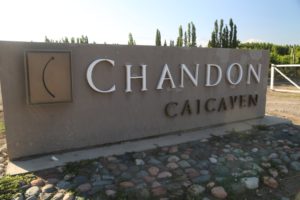
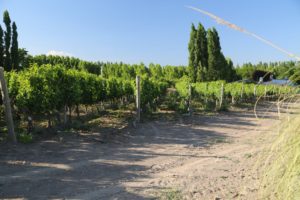
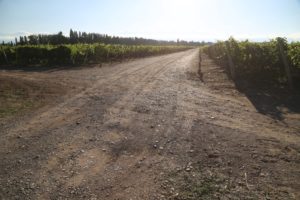
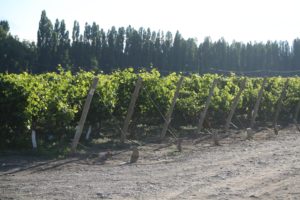

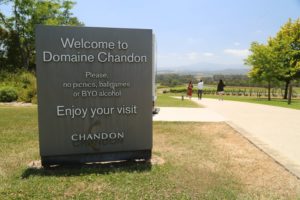
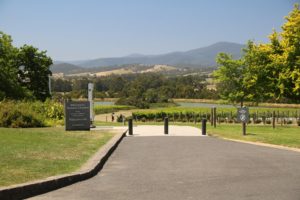
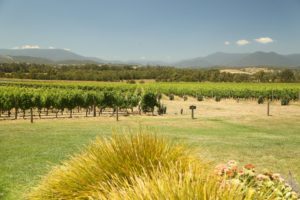
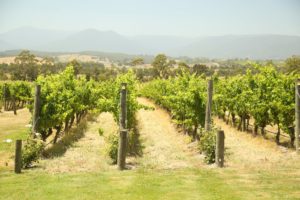
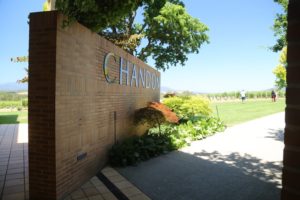
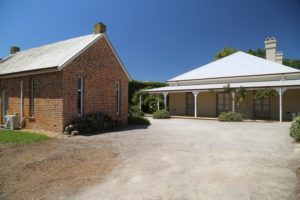
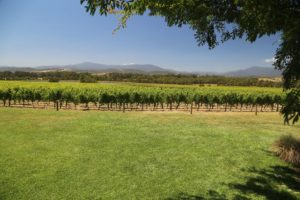
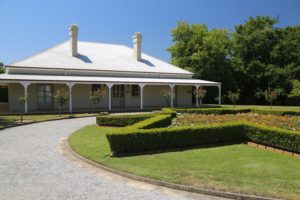
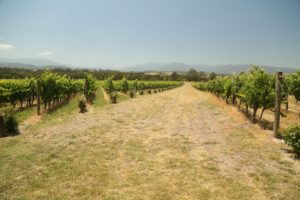
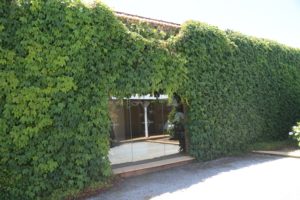
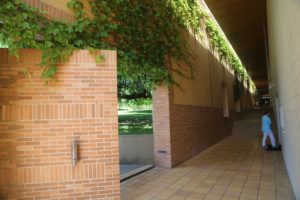
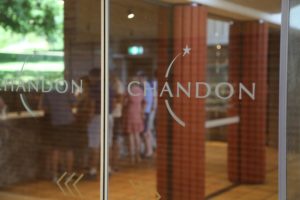
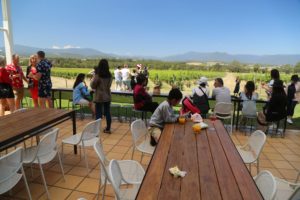
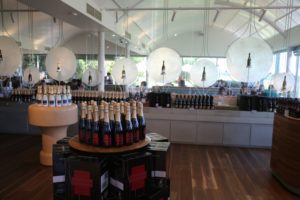
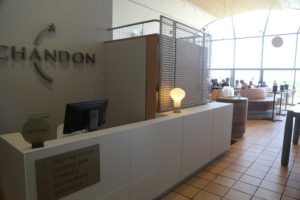
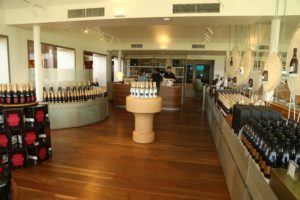
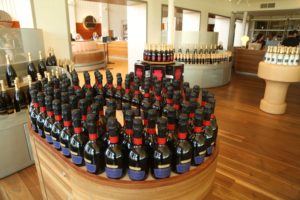
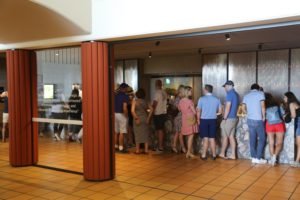
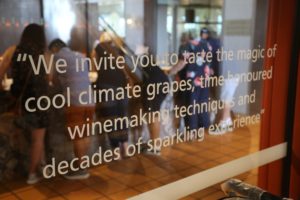
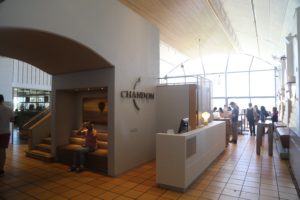
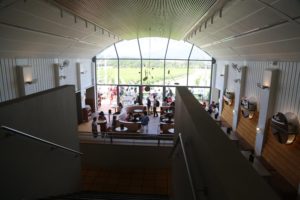
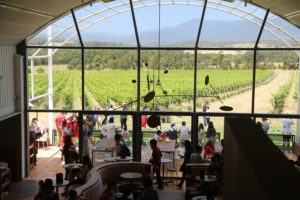
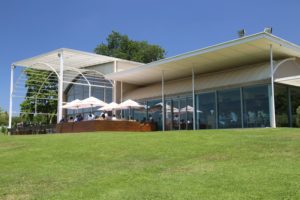
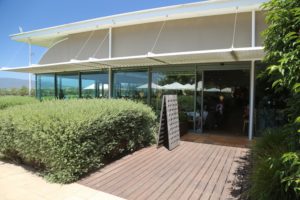
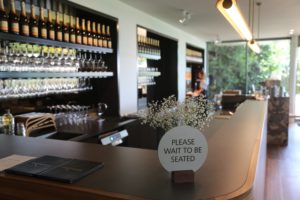
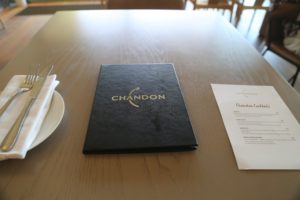

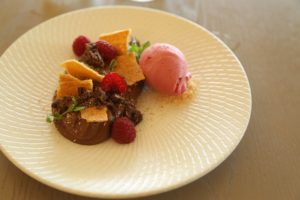
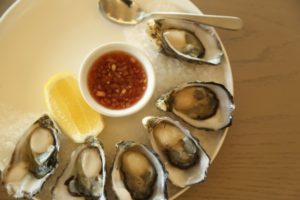
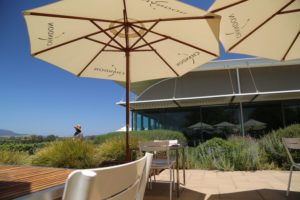
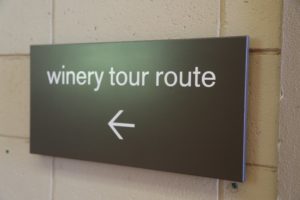
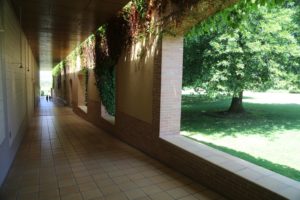
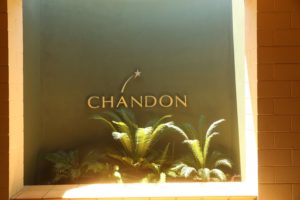
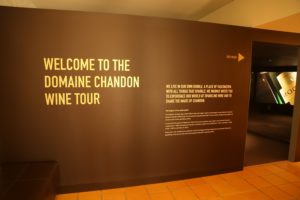
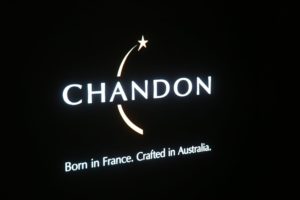
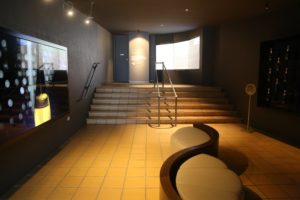
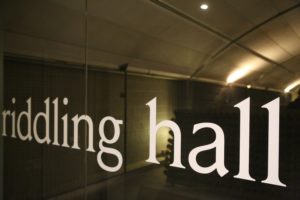
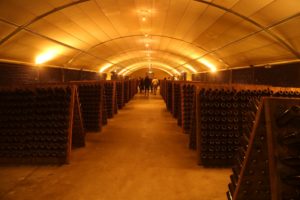
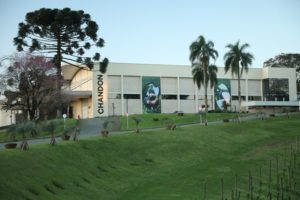
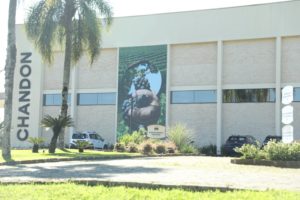
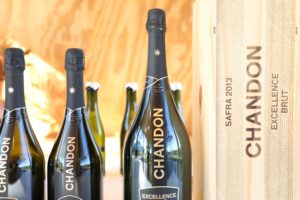
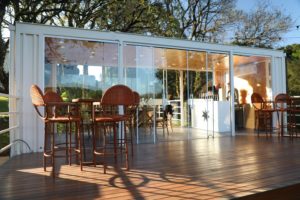

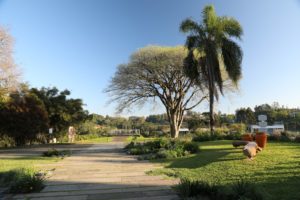


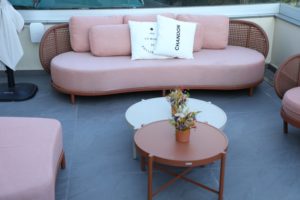
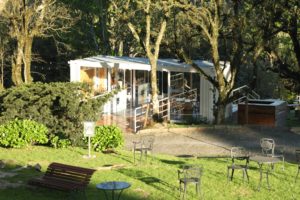
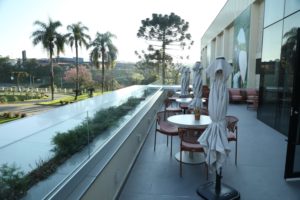
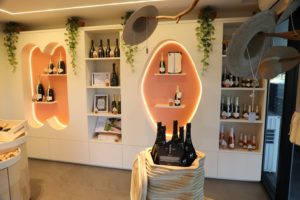
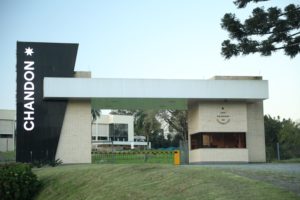


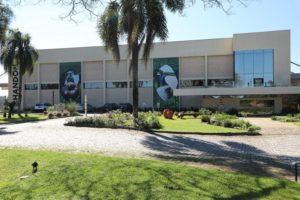
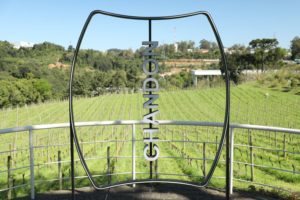

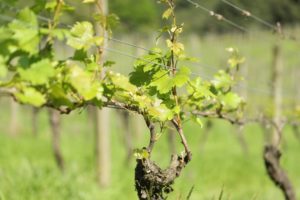
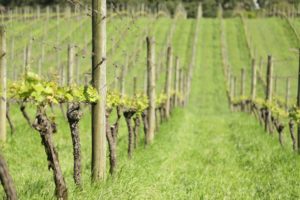

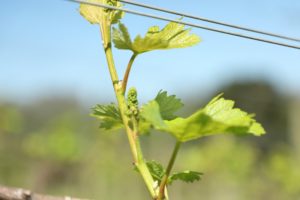
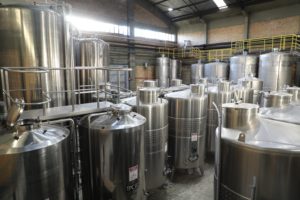

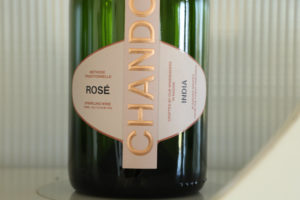
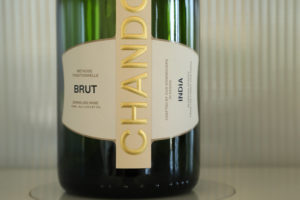
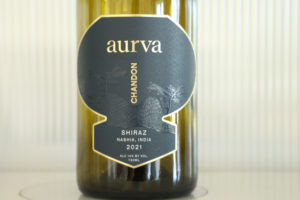
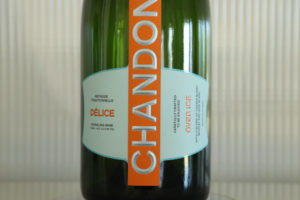
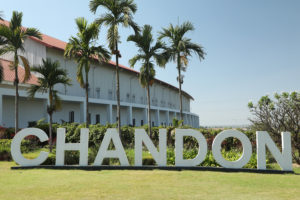
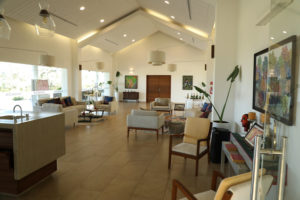
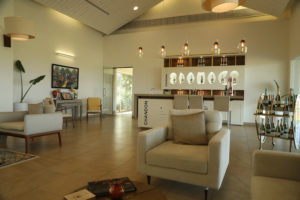
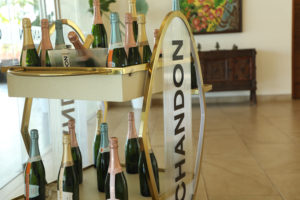
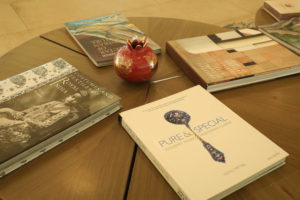
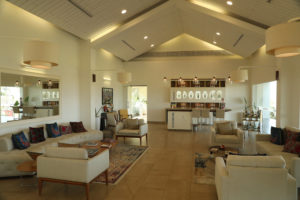
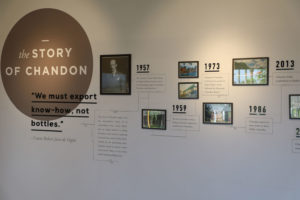
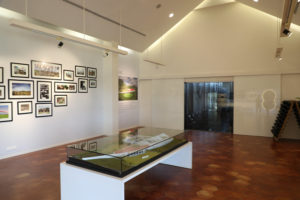
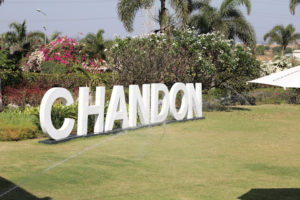
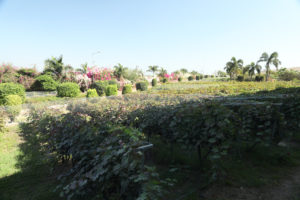
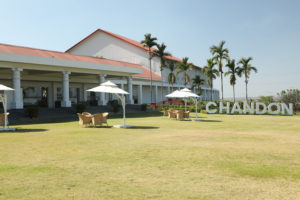
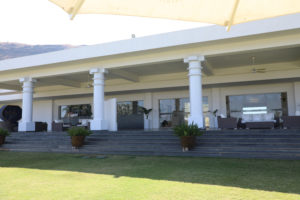
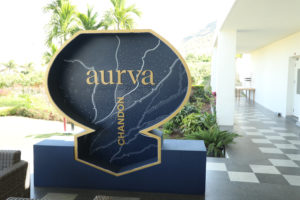
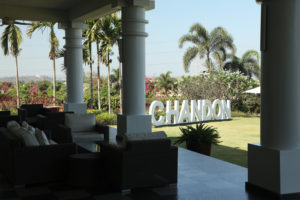
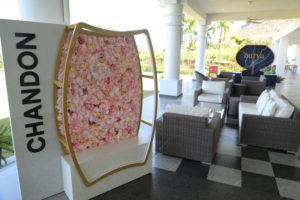
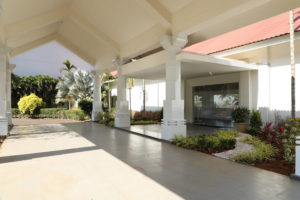
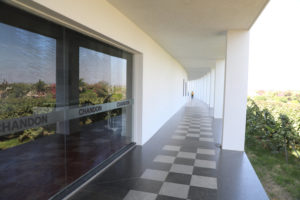
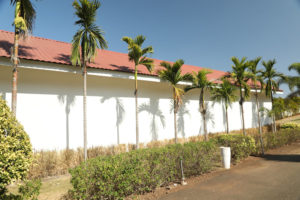
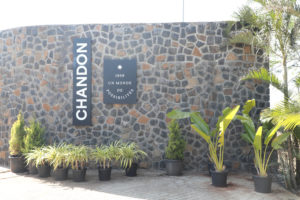
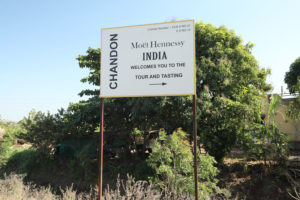
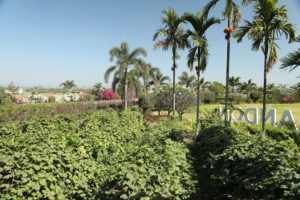
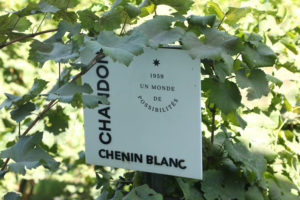
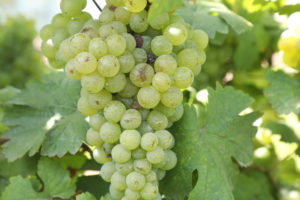
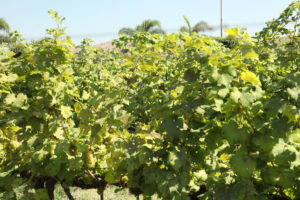
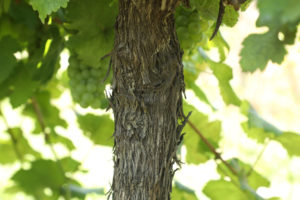
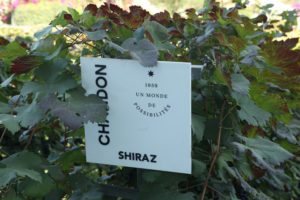
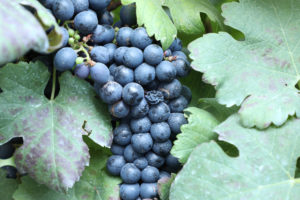
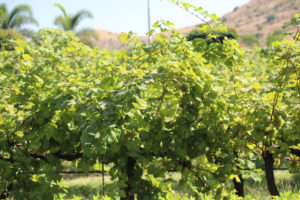
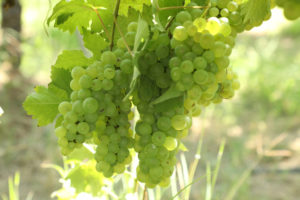
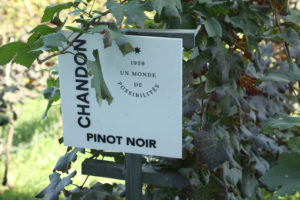
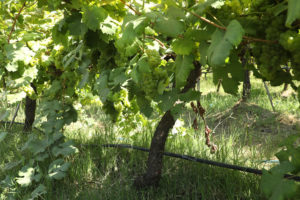
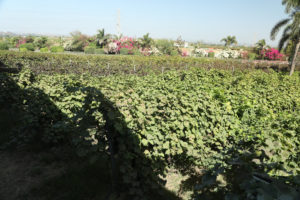
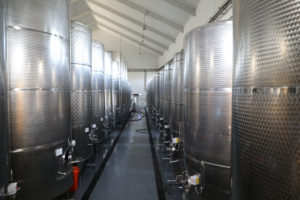
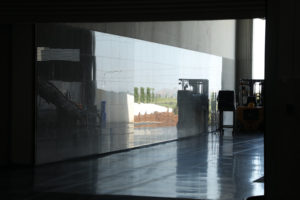
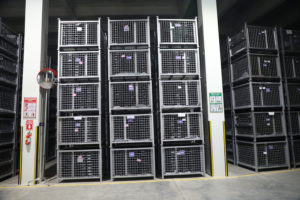
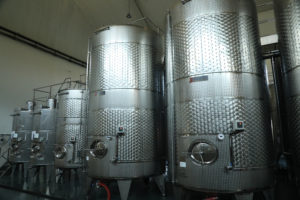
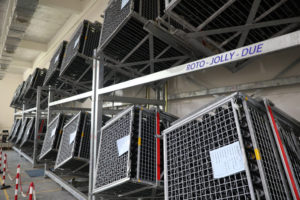
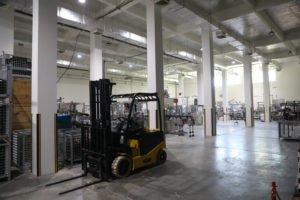
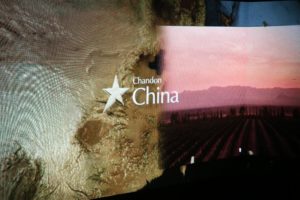
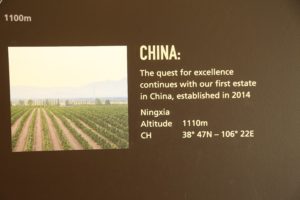
Dom Pérignon’s vintage bottles serve as the prestige Champagne for Moët & Chandon, one of the world’s largest and most prominent.
Deneen – thank you for your valuable insights.
Ok, Chandon Australia just visited – Brazil, China and India up next – although not necessarily in that order 🙂
Merci. This was very useful info for a Champagne Novel I’m writing. I’ve taken the Domaine Chandon tour a few times. Very sorry it’s not open for public walk-ins any more.
Caroline. You just MADE my day! I’ve put a lot of effort, time and expense into writing just this review, of the 1,200+ Napa wineries/producers I’ve visited and many of whom I’ve chased all over the country and planet visiting places or spaces strongly connected to their Napa based locations.
I haven’t yet been to their properties in Brazil & China yet but those two properties are priority visits for me.
Let me know the name of your novel when you get a chance, and when it is completed, I will order one. ~ Dave
Bonjour Dave,
Just saw your reply. Will definitely let you know when the novel is out next year.
May even send you a preview copy…
I’ve also visited Moet in Epernay a few times and stayed at their Chateau de Saran years ago as a guest.
Will be nice when we can travel again. I had to postpone a two week trip to Tuscany – will do that next year.
Best, Caroline
Thanks Caroline – I may still head to Brazil at the end of this year. Been on the road a bunch this year already – mostly domestic but I did sneak away to the very remote Tuamotos last month and Mexico. I still have numerus Napa connected spaces and places to visit in Europe – hopefully will get to them next year. (Update: we made two trips to Europe in 2021, one in late winter and the other in mid fall). Cheers.
Caroline. Have you published your novel yet? I did get to walk the grounds of Chateau Saran this weekend- finally getting to visit the estate!